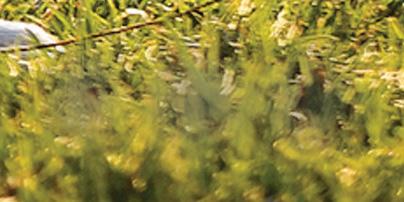
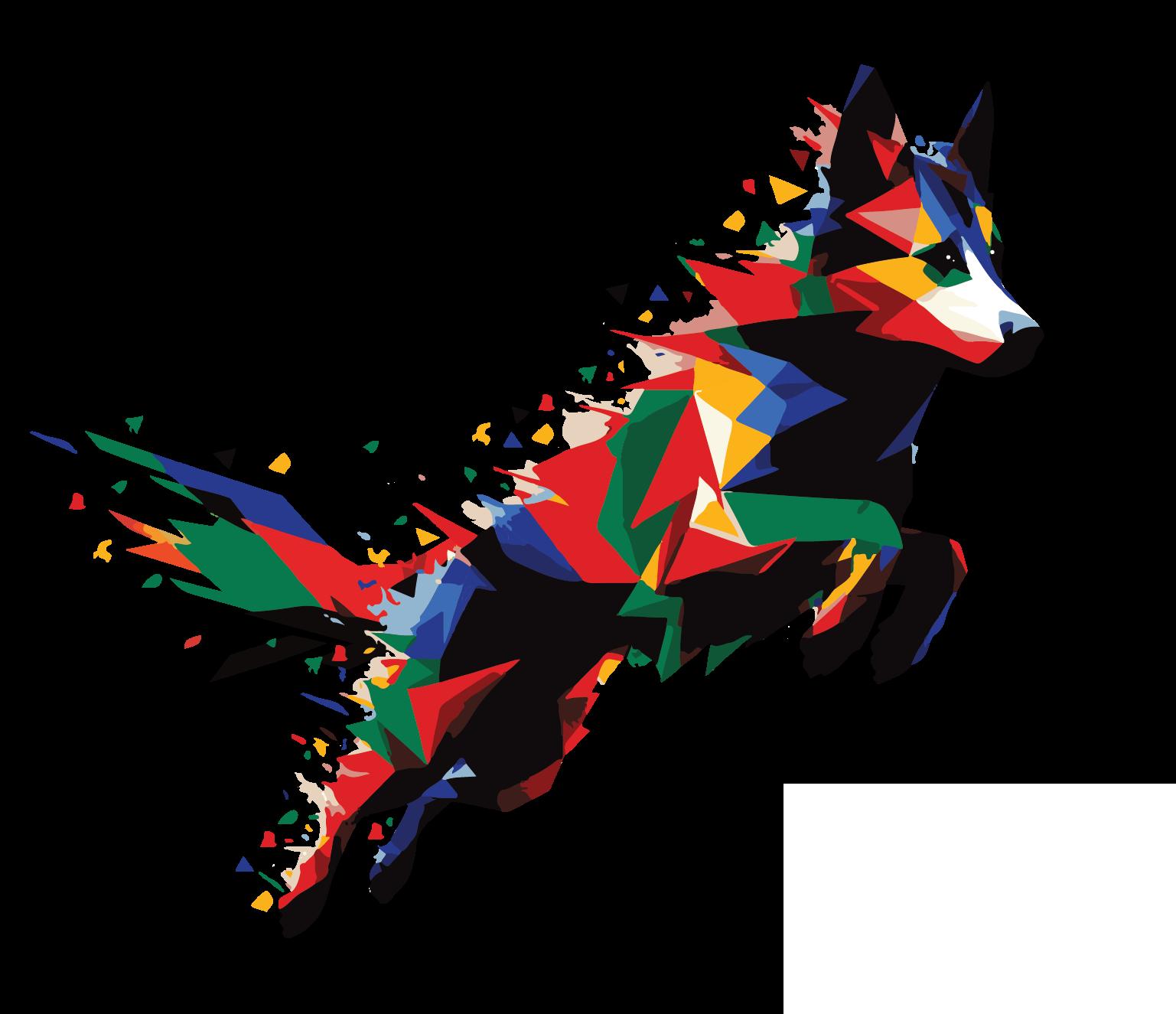
Hello from Dog Quarterly !
Welcome to the latest edition of Dog Quarterly, South Africa’s premier dog magazine. We are thrilled to bring you another issue filled with content dedicated to our beloved canine companions.
As dog lovers, we understand the joy and fulfilment that our furry friends bring into our lives. Our mission at Dog Quarterly is to provide you with the best advice, tips, and stories to enhance your journey as a dog owner. Whether you're a new puppy parent or a seasoned dog owner, our magazine offers something for everyone.
In this issue, you’ll find:
• Breed profile: Learn about the Airedale Terrier, known as the ‘King of Terriers,’ and why this breed might be the perfect addition to your family.
• Golden oldies: Understand the benefits of adopting senior dogs and the joy they bring to their new homes.
• Winter safety tips: Get our top tips for keeping your dog safe and happy during the colder months.
• Building a canine first aid kit: Learn what essential items to include in a first aid kit for your dog and how to use them.
• Preventative vet care: Discover why regular vet visits are crucial for your dog’s health.
• Socialisation tips: Find out how to properly socialise your dog to ensure they are welladjusted and happy.
• Avalanche rescue dogs: Read about the unsung heroes of the snow and their incredible work in saving lives.
We hope you enjoy this issue! Your feedback is always welcome, so please feel free to share your thoughts and suggestions with us. Together, we can continue to celebrate and improve the lives of our four-legged friends.
Thank you for being part of our Dog Quarterly community! Have a fantastic month, and we’ll see you back here on the 15th of July.
Lizzie and the DQ team xxx
Dr Lizzie Harrison | Editor
Follow us on Instagram @dogquarterlymag and Facebook at DQ Magazine for updates and more dog-loving content. Stay tuned for the next issue of Dog Quarterly, available on 15 July 2024. Visit us at http://www.dqmagazine.co.za
DQ | 8C 3 Designer | Anne Royden-Turner
DIGITAL ISSUE 10A | 2024
Airedale Terrier
The King of Terriers
Golden oldies
The benefits of adopting senior dogs
7 top tips
For keeping your dog safe and happy in the cold
Building a canine first aid kit
Essential items for emergencies
Unsung heroes of the snow
Avalanche Rescue Dogs
Regular vet visits
Preventative care for canine health
Ask DQ
Your questions answered
How to socialise your dog
Tips for a well-adjusted pet
Products we love
DQ | 8C 4
CONTENTS
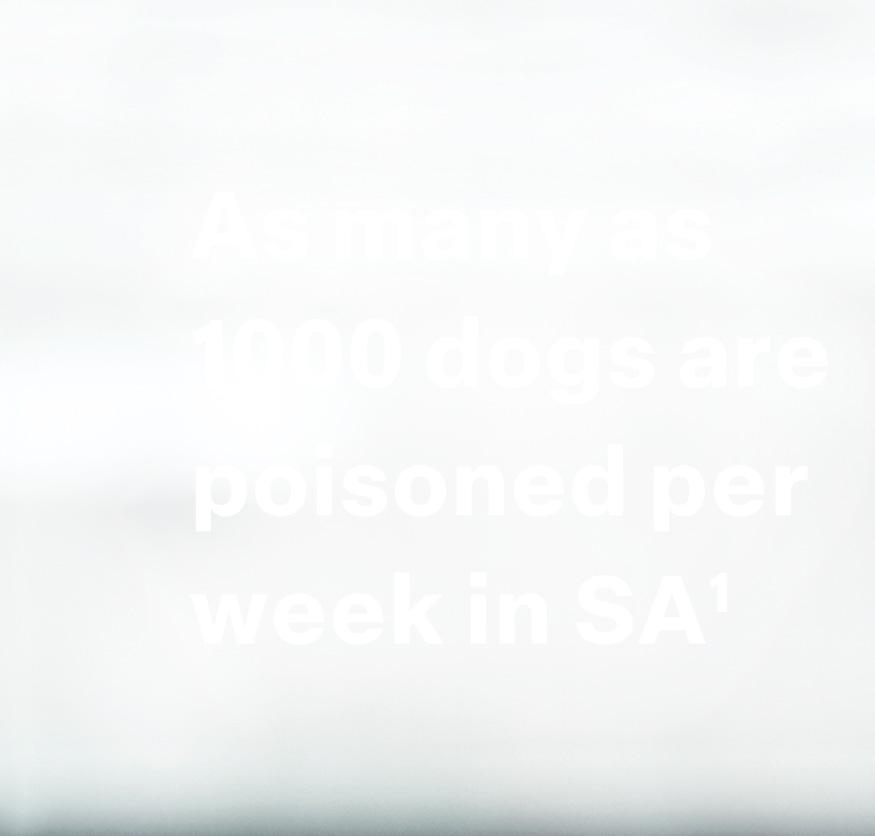






























































































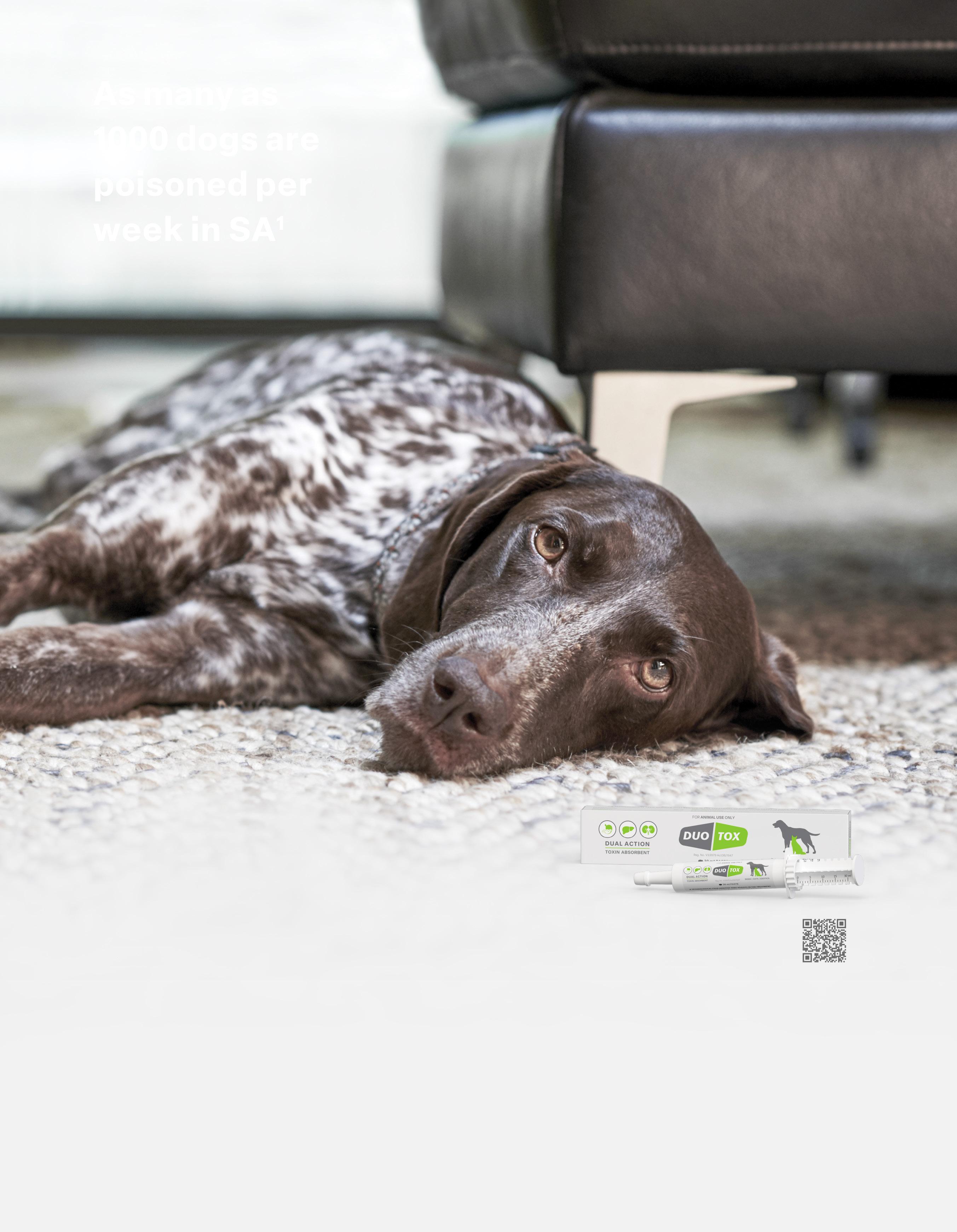
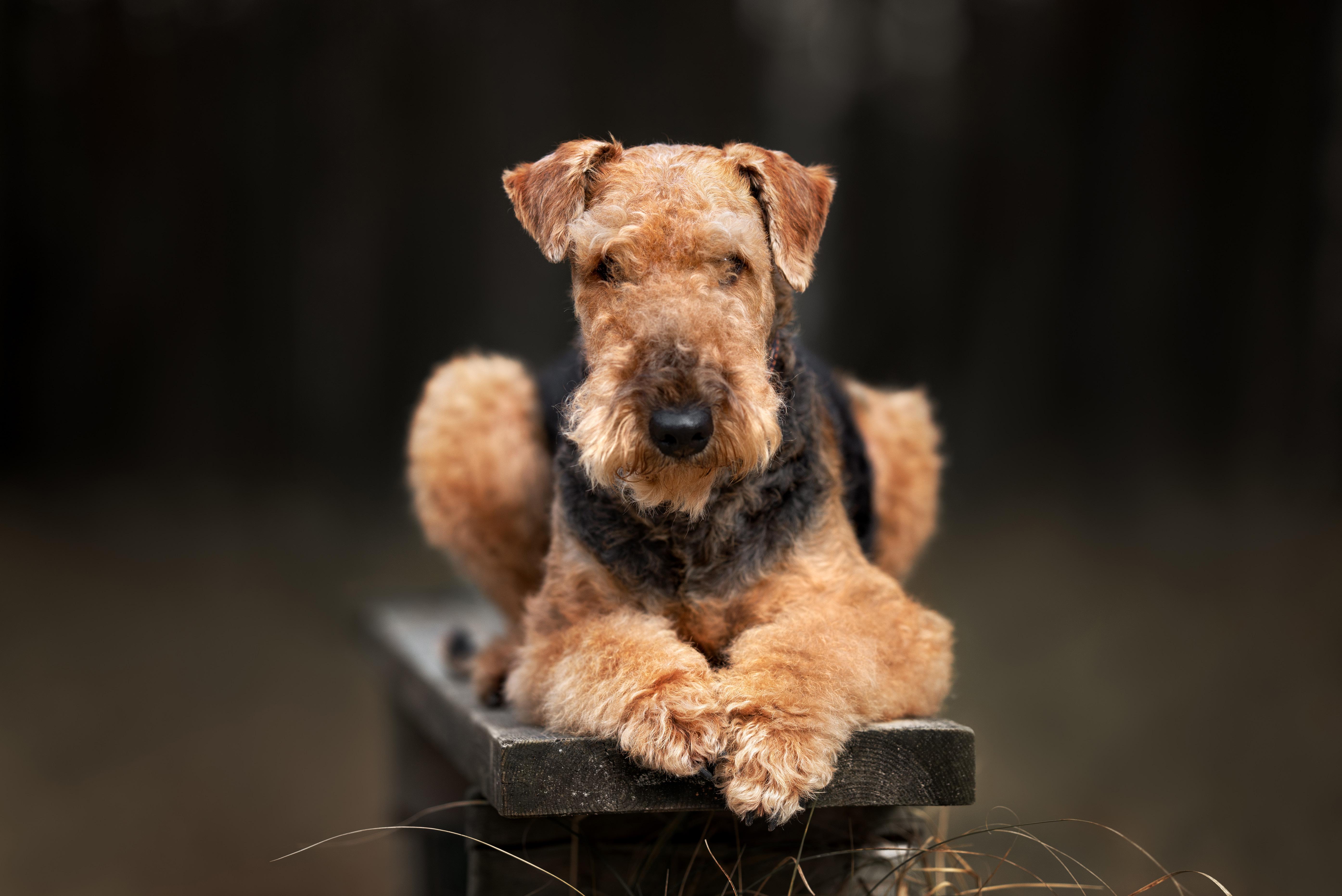
DQ | 8C 6 BREED PROFILE
Airedale Terrier
THE KING OF TERRIERS
DQ | 8C 7
BREED PROFILE
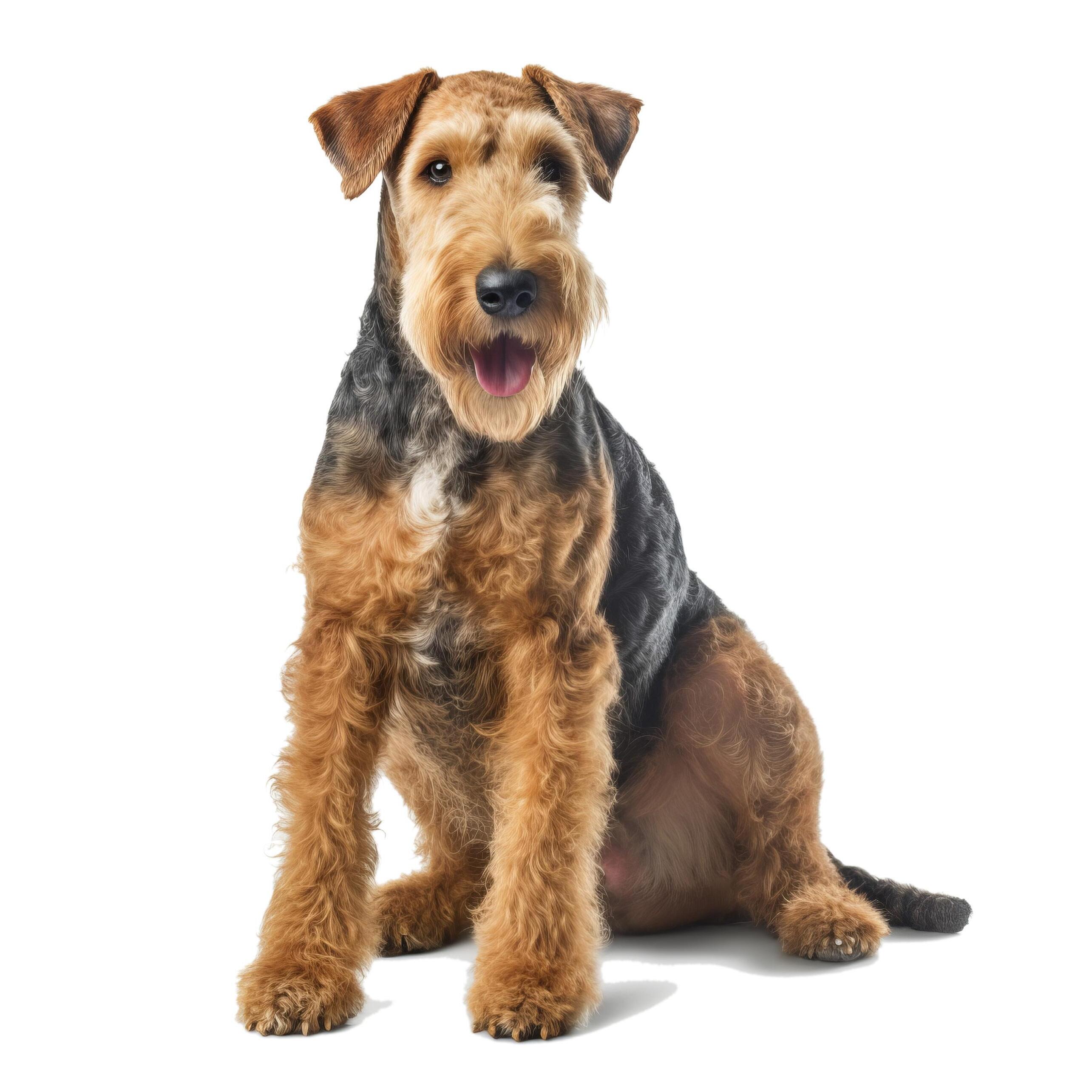
The Airedale Terrier, often celebrated as the ‘King of Terriers,’ is the largest and one of the most versatile members of the terrier group. Originating from the Aire Valley in Yorkshire, England, this breed was initially developed for hunting otters and rats. Today, the Airedale is known not only for its hunting prowess but also for its intelligence, loyalty, and lively personality, making it an exceptional companion and working dog.
DQ | 8C 8
BREED PROFILE
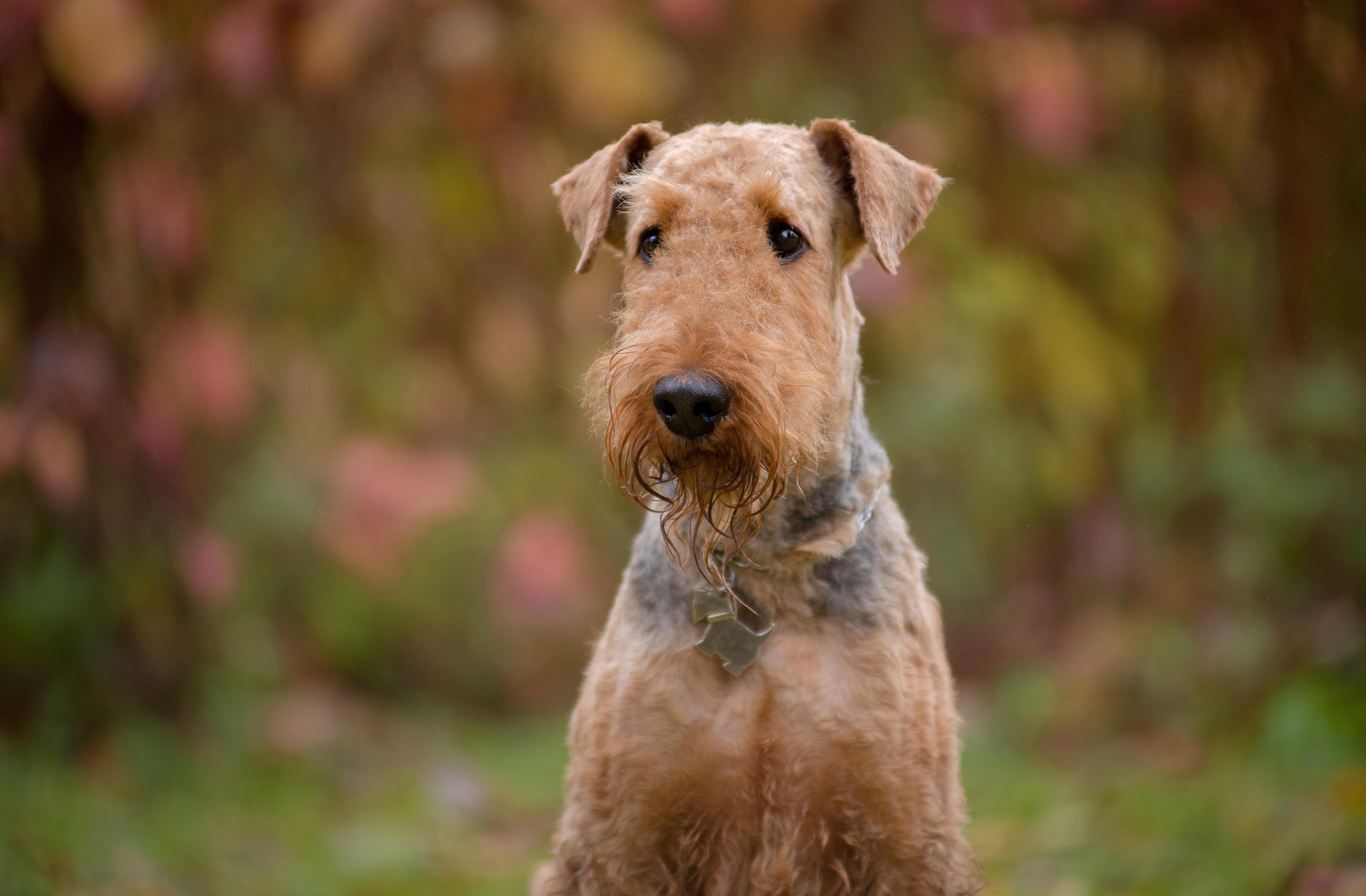
HISTORY
The Airedale Terrier was developed in the mid-19th century in the Aire Valley of Yorkshire, England. By crossing the old English roughcoated Black and Tan Terrier with the Otterhound and potentially other breeds, breeders aimed to create a versatile hunting dog capable of handling both water and land game. Over time, the Airedale's versatility saw it used in police and military work, showcasing its intelligence and trainability.
DQ | 8C 9 BREED PROFILE
APPEARANCE
The Airedale Terrier is a medium to large-sized dog known for its distinctive appearance:
• Height: 21-23 inches at the shoulder
• Weight: 18-25kg
• Coat: The coat is dense, wiry, and harsh, with a softer undercoat.
• Colour: Typically tan with a black saddle, though some may have a grizzle pattern.
• Head: Long and flat, with a welldefined stop and a powerful, strong jaw.
• Ears: V-shaped, folding over to the side.
• Eyes: Dark, small, and full of expression.
THE GRIZZLE PATTERN
The grizzle pattern on an Airedale Terrier refers to a specific colour pattern in the coat. It typically involves a mix of black or dark grey hairs with lighter, usually tan, hairs. This pattern can give the appearance of a mottled or salt-and-pepper look, creating a distinctive and textured appearance. The pattern is often seen on the back and sides of the dog, creating a ‘saddle’ or blanket effect. The head, legs, and underbody are usually solid tan or lighter in colour.
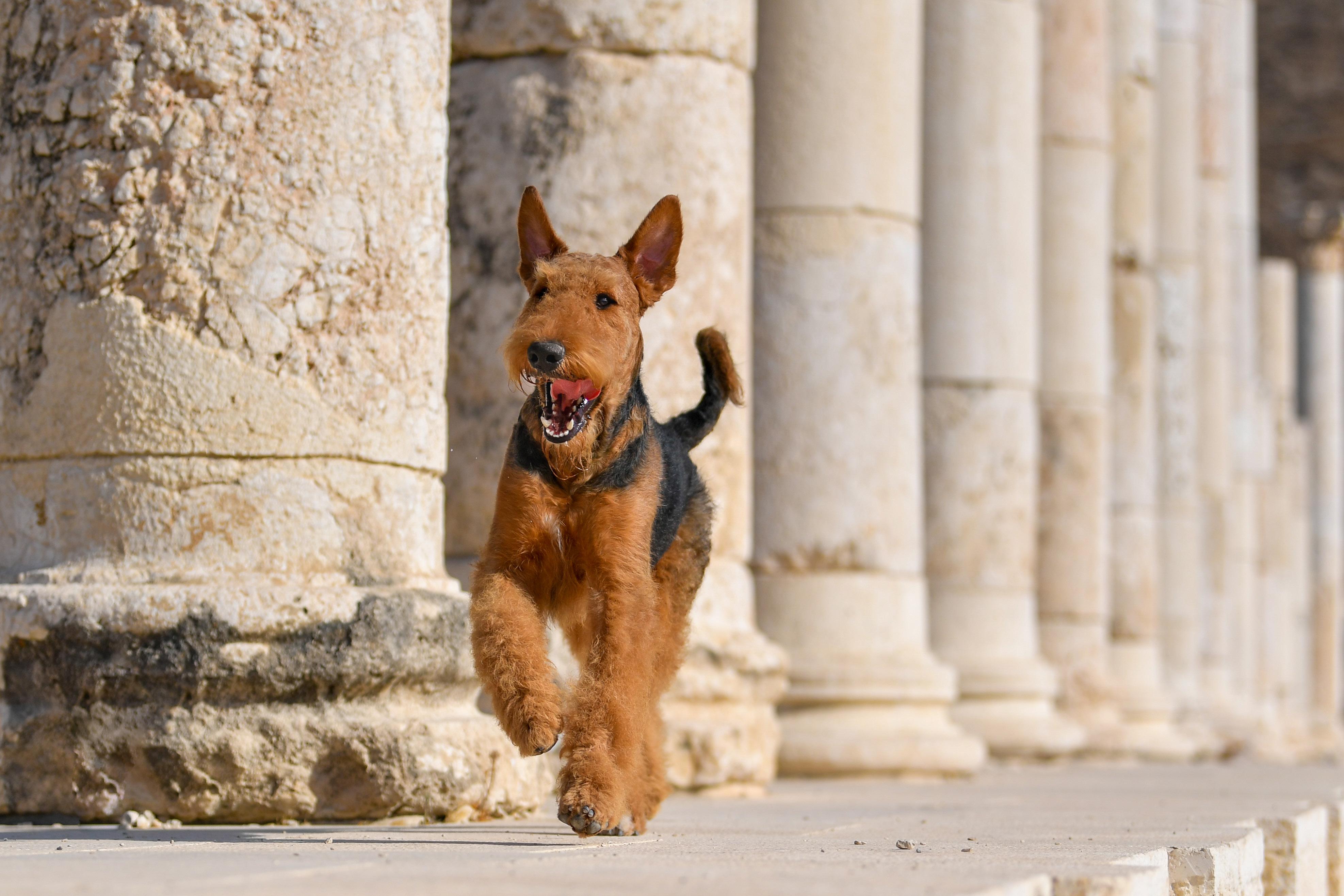
DQ | 8C 10
BREED PROFILE

DQ | 8C 11 BREED PROFILE
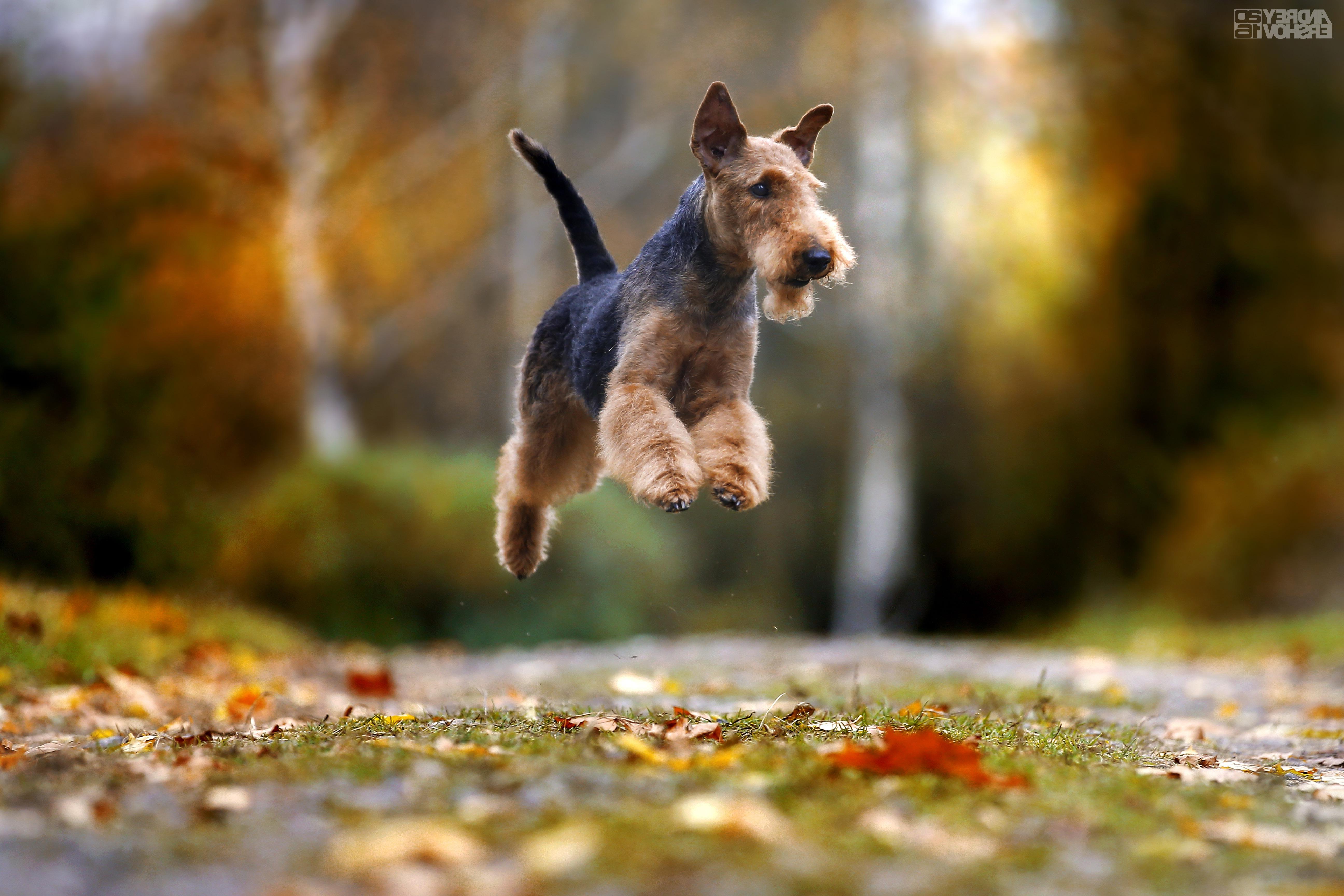
FAST FACT
Airedales were among the first breeds trained for police work in both Britain and Germany.
DQ | 8C 12 BREED PROFILE
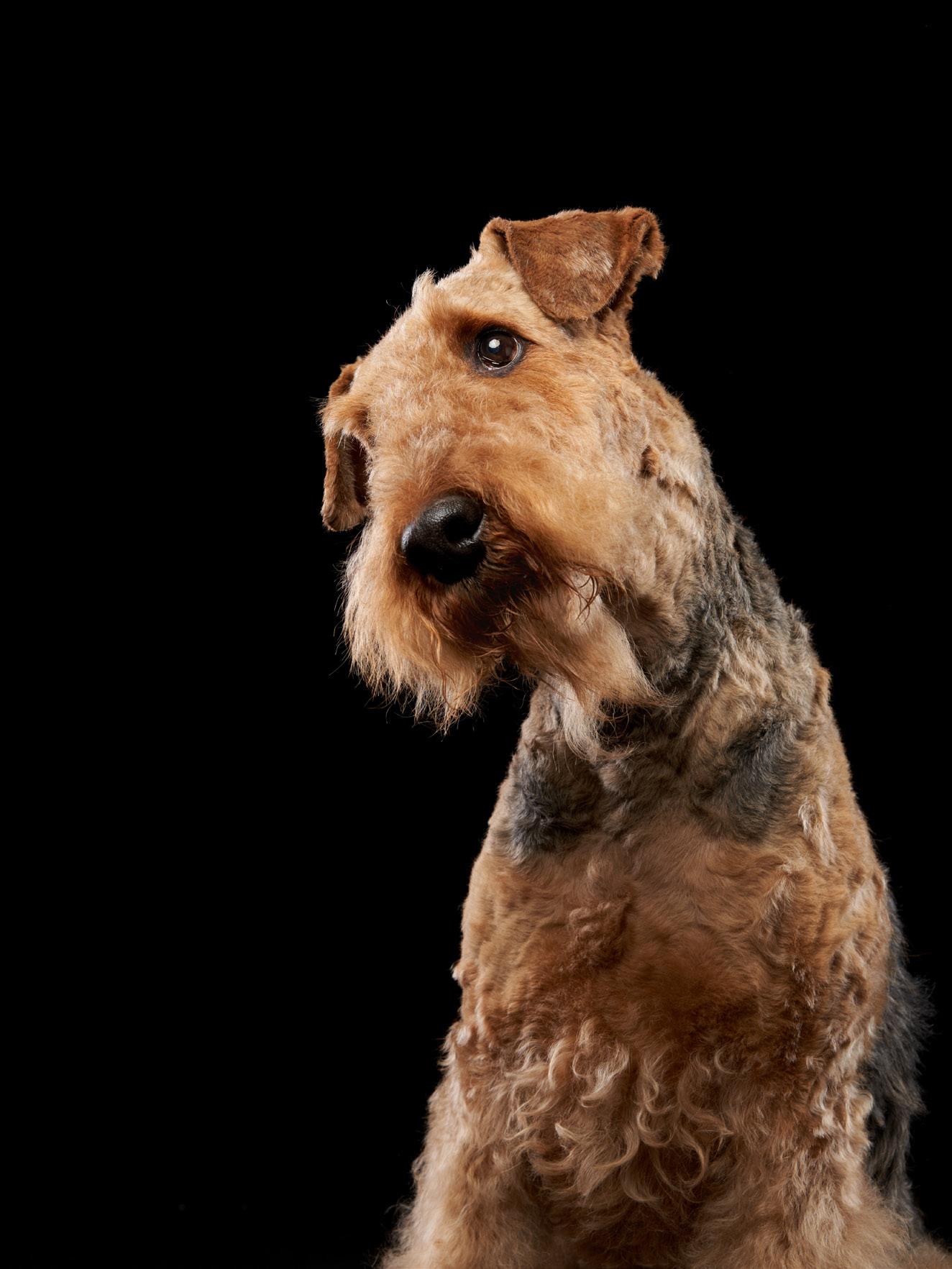
bold and often recognised for their bravery. They respond well in training to positive reinforcement techniques, and their intelligence makes them highly trainable for a variety of tasks.
Airedales are generally good with children, especially if they have been socialised from a young age. They can also be good with other dogs but may not mix well with smaller
HEALTH AND CARE
The Airedale Terrier is generally a robust and healthy breed, with an average lifespan of 10-13 years. However, there are some common health issues that should be borne in mind. These include:
• Hip dysplasia
• Allergies
• Some skin conditions
DQ | 8C 13 BREED PROFILE
DID YOU KNOW?
Airedale Terriers played a significant role during World War I, showcasing their versatility, intelligence, and bravery. These dogs were employed in various capacities, proving their worth in the harsh and demanding conditions of the battlefield.
One of the primary roles of Airedale Terriers during the war was as messenger dogs. Their tasks included carrying messages between command posts and units in the field. The Airedales' resilience and determination allowed them to traverse difficult and dangerous terrains, ensuring critical communications were maintained. Their strong sense of direction and loyalty to their handlers made them ideal for this task.
Airedales also served as sentry and guard dogs, protecting camps and installations from intruders. Their keen senses and alert nature enabled them to detect the presence
of enemies, sounding the alarm to prevent surprise attacks. Their imposing size and fierce loyalty made them effective deterrents against potential threats.
Airedales were also trained as casualty or ambulance dogs, responsible for locating wounded soldiers on the battlefield. Equipped with medical supplies, these dogs would search for injured personnel, providing much-needed aid and comfort. Their ability to navigate chaotic and dangerous environments to reach those in need was invaluable.
There are several notable stories highlighting the bravery of Airedale Terriers during the war. One famous Airedale named Jack became a hero when he delivered a vital message to headquarters despite being severely injured by shrapnel. Jack's determination and courage ensured that reinforcements were sent to his unit, ultimately saving many lives.
DQ | 8C 14 BREED PROFILE
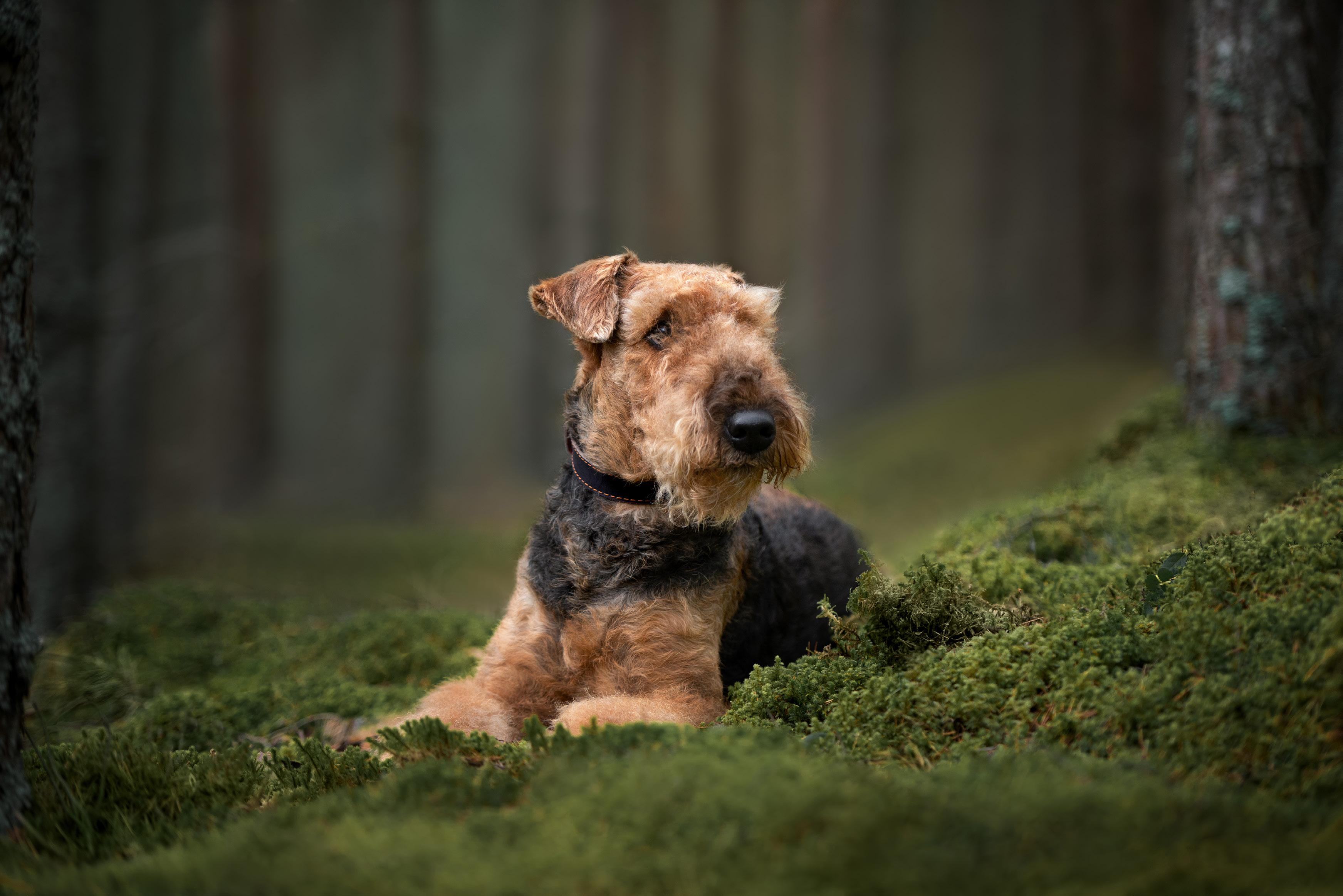
DID YOU KNOW?
Famous owners include John Wayne, whose nickname ‘Duke’ was inspired by his Airedale Terrier, ‘Little Duke.’
DQ | 8C 15 BREED PROFILE
GROOMING
Regular grooming is essential to maintain the Airedale’s coat. This includes brushing several times a week and periodic handstripping or clipping to keep the coat in top condition. This is not a breed for those looking for a lowmaintenance dog!
LIVING CONDITIONS
Airedales are adaptable but thrive in environments that meet their physical and mental needs. In terms of their living environment, they can adapt to living in smaller properties if given sufficient exercise to compensate, but ideally, they prefer a home and garden where they can run and play freely.
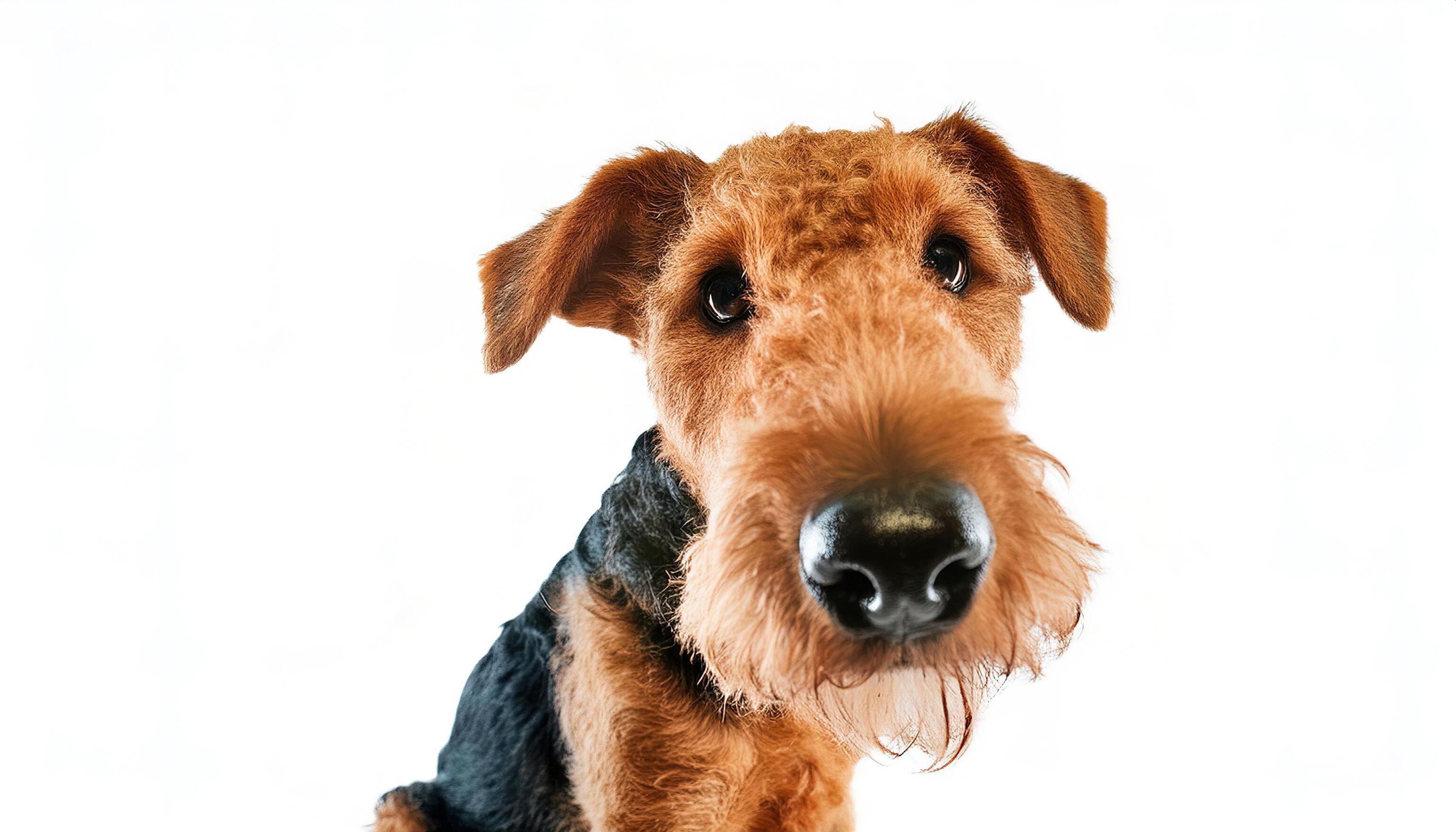
DQ | 8C 16 BREED PROFILE
EXERCISE
An Airedale Terrier’s exercise needs are high. They need daily physical exercise, and mental challenges are crucial to prevent boredom and the development of undesirable behaviours.
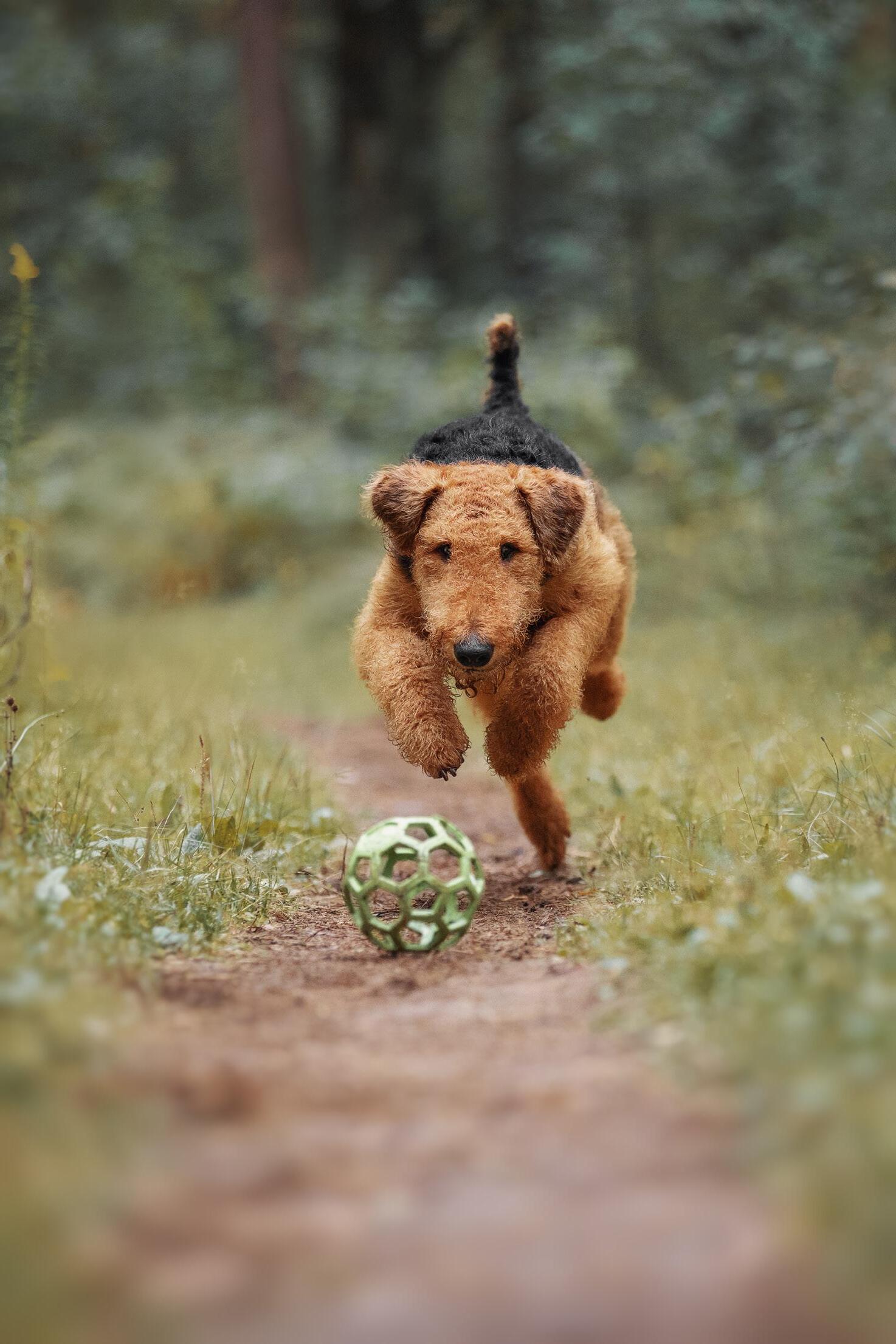
CONCLUSION
The Airedale Terrier's unique combination of athleticism, intelligence, and loyalty makes it a treasured breed for those who can provide the active lifestyle and companionship it needs. Whether as a family pet, a show dog, or a working dog, the Airedale excels in various roles, truly living up to its title as the ‘King of Terriers.’
DQ | 8C 17 BREED PROFILE
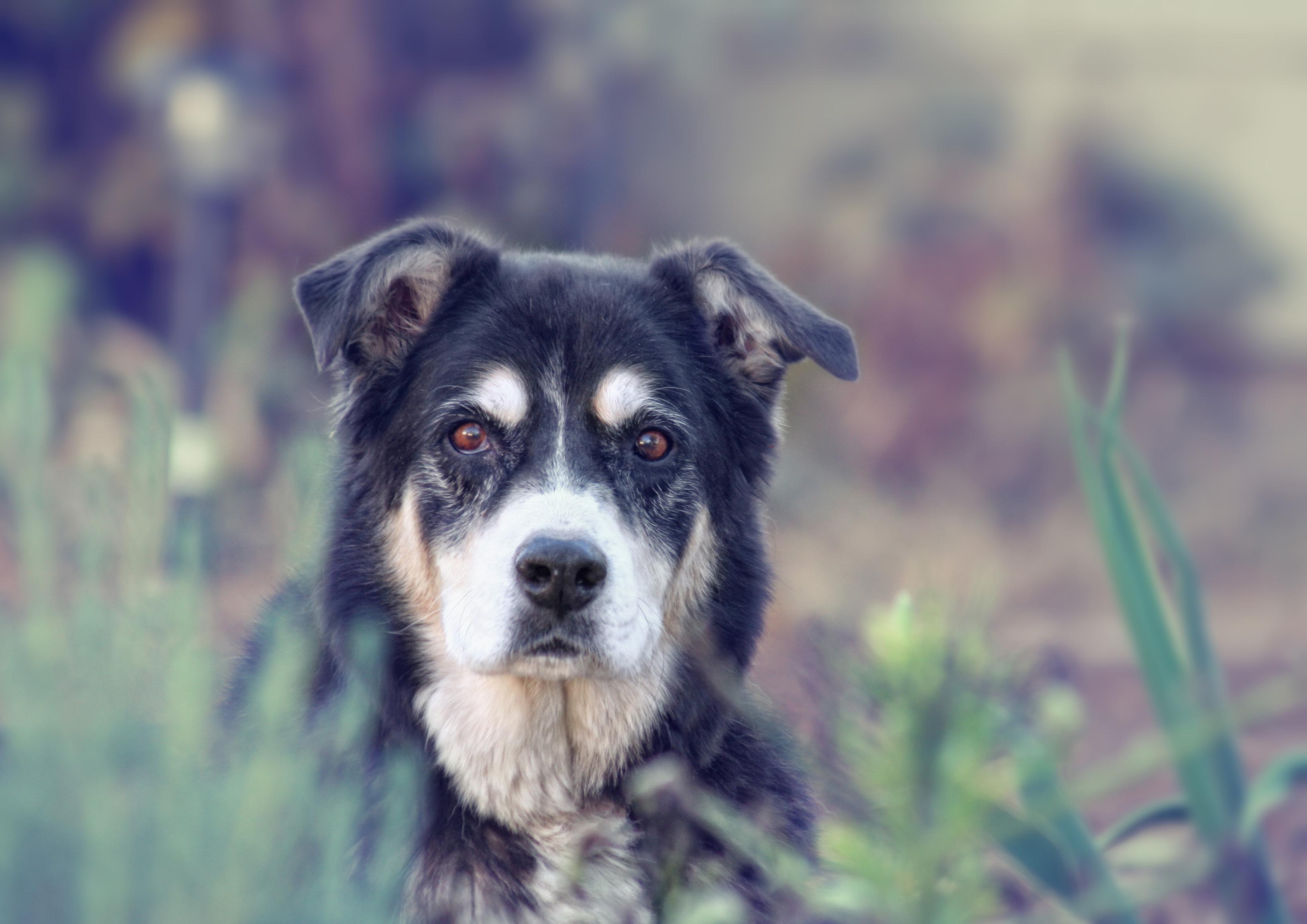
DQ | 8C 18 DOGS AT HOME
GOLDEN OLDIES
THE BENEFITS OF ADOPTING SENIOR DOGS
When considering adding a new furry friend to your family, puppies often come to mind with their boundless energy and irresistible cuteness. However, adopting a senior dog can be an equally rewarding experience, if not more so. Older dogs bring a unique set of advantages that make them wonderful companions. Here’s why adopting a senior dog might be the perfect choice for you:
1. CALMER DEMEANOUR
One of the most notable benefits of adopting a senior dog is their typically calmer demeanour. Unlike puppies, who require constant attention, training, and supervision, senior dogs often come with a well-established, mellow temperament. This makes them an excellent choice for:
• Busy households: Older dogs are usually content to relax and enjoy quiet time, making them a great fit for people with busy lifestyles.
• First-time dog owners: Their calm nature makes them easier to manage and a wonderful introduction to dog ownership.
• Families with young children or elderly members: Senior dogs’ gentle and patient behaviour can be more suitable for households with small children or older adults.
DQ | 8C 19 DOGS AT HOME
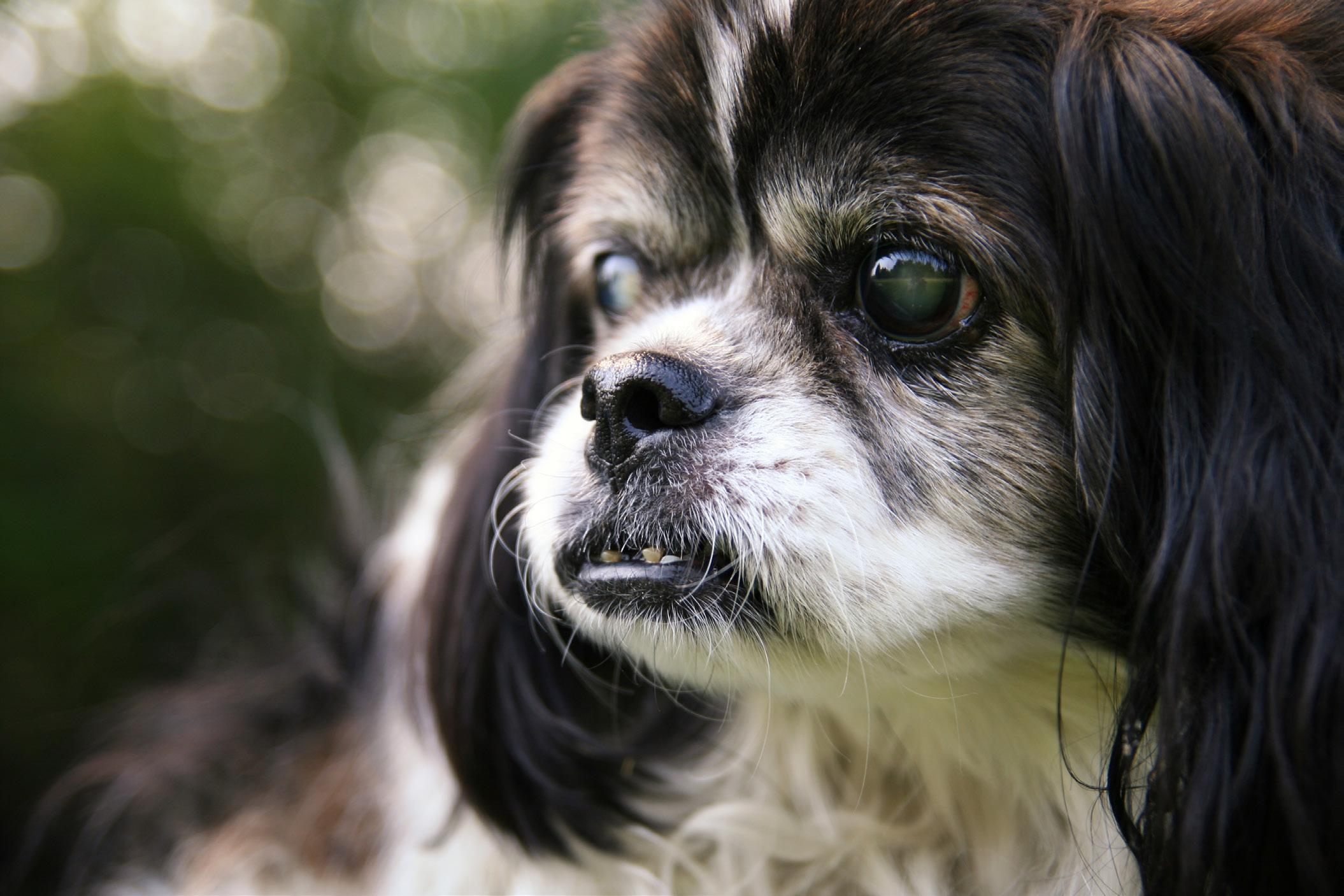
2. ESTABLISHED PERSONALITY
When you adopt a senior dog, you know what you’re getting. Their personalities are fully developed, so there are fewer surprises compared to adopting a puppy whose temperament is still forming. This allows you to find a dog
whose personality and energy level match your own. You can meet senior dogs and choose one whose behaviour and temperament are a perfect fit for your lifestyle, whether you want a cuddly lap dog or a more independent companion.
DQ | 8C 20 DOGS AT HOME
3. ALREADY TRAINED
Many senior dogs come from previous homes where they have received basic training. This means they are often:
• House-trained: Avoid the messy and time-consuming process of potty training a puppy.
• Leash-trained: Enjoy stressfree walks with a dog that already understands leash manners.
• Familiar with commands: Many senior dogs know basic commands like sit, stay, and come, which can make integrating them into your home smoother and easier.
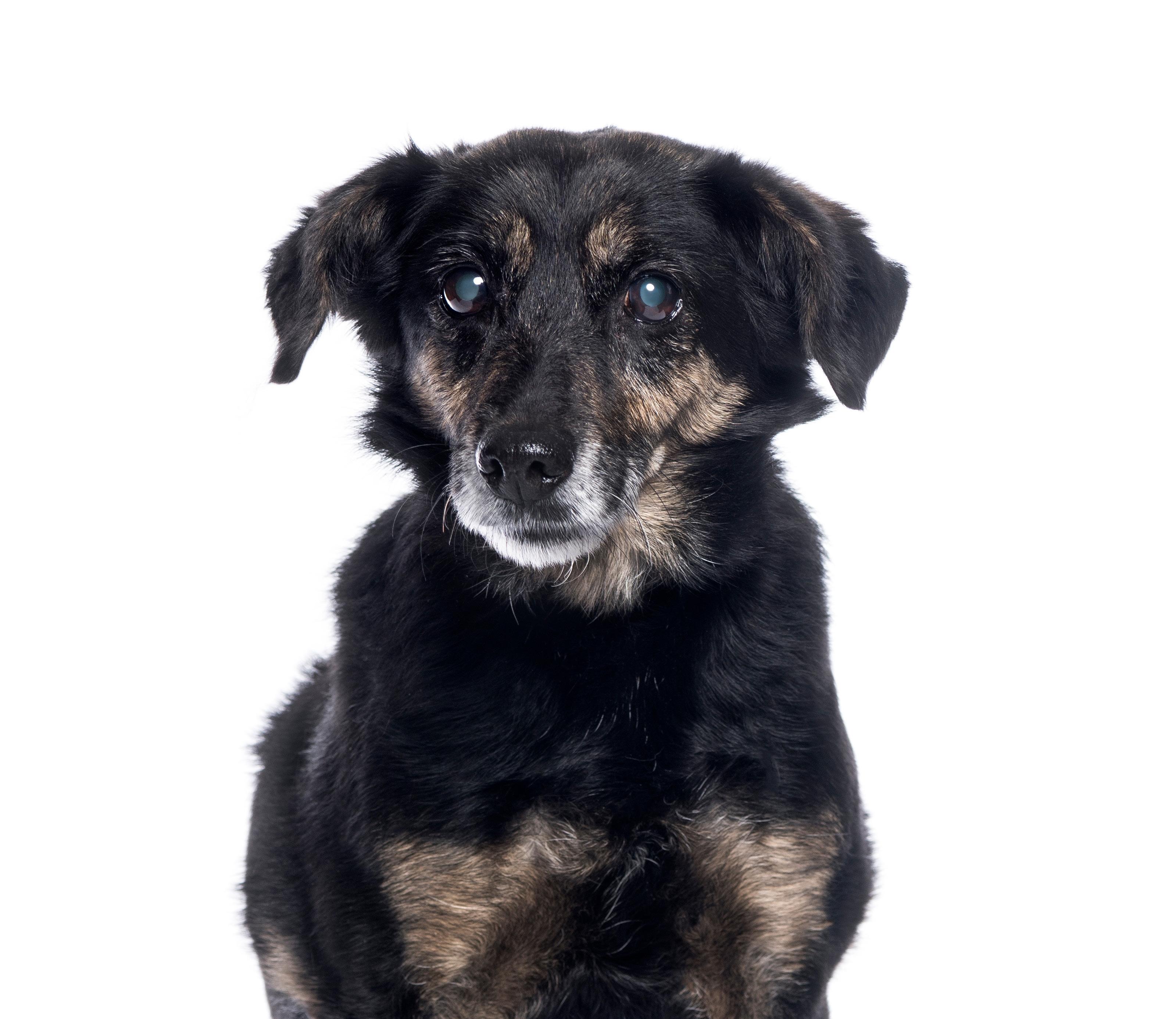
DQ | 8C 21 DOGS AT HOME
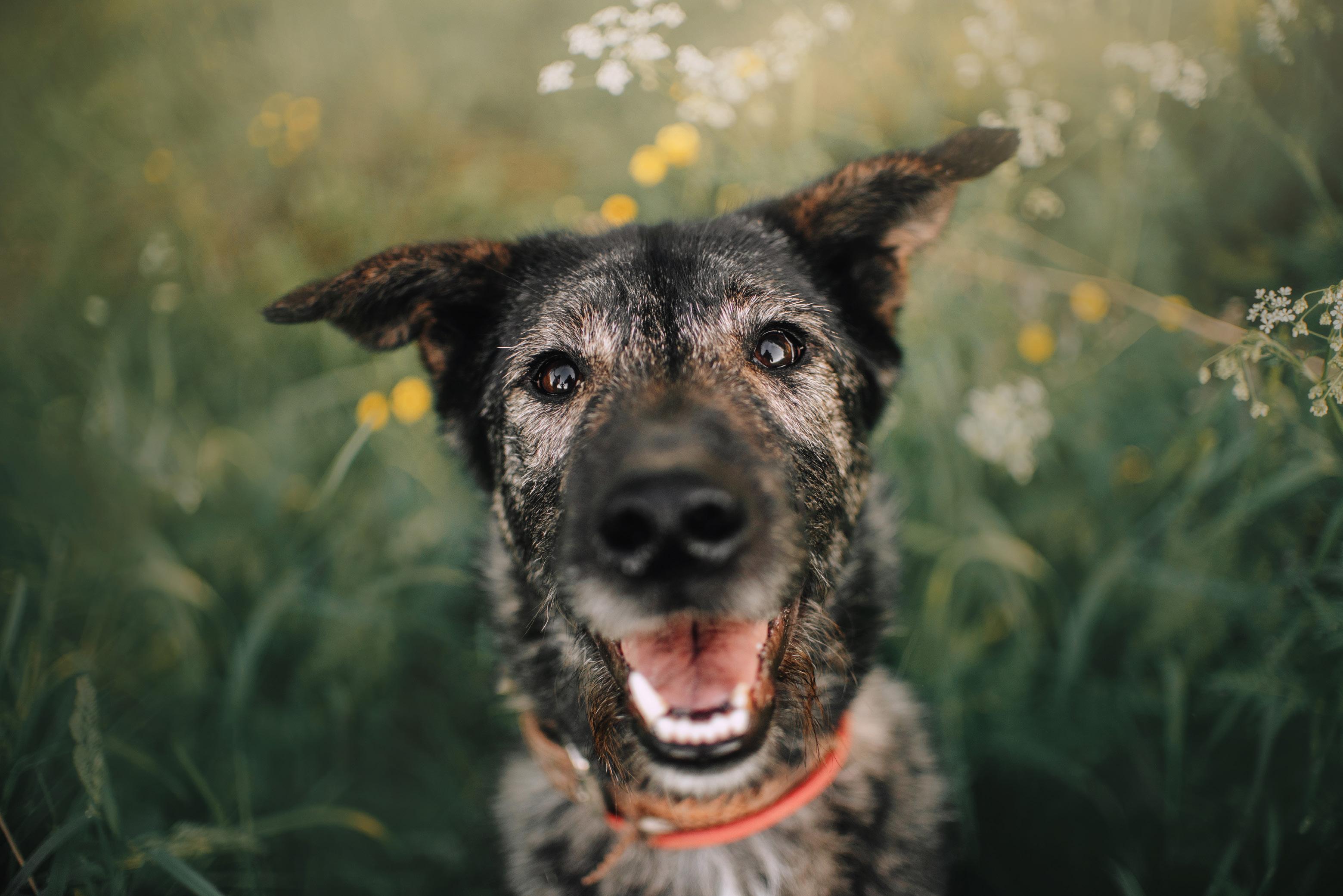
4. LOWER ENERGY
Senior dogs generally have lower energy needs than younger dogs, making them ideal for people who prefer a more relaxed lifestyle. They are often content with shorter walks and less vigorous play sessions, which can be a better fit for:
• Apartment dwellers: Their lower exercise requirements make them wellsuited for smaller living spaces.
• Older adults: Senior dogs are perfect companions for older individuals who may not be able to meet the highenergy demands of a young dog.
DQ | 8C 22 DOGS AT HOME
5. HEALTH BENEFITS FOR OWNERS
Studies have shown that owning a dog can have numerous health benefits, such as reducing stress, lowering blood pressure, and encouraging regular exercise. Senior dogs, with their steady presence and loving nature, can enhance these benefits by providing:
• Emotional support: The companionship of a senior dog can combat loneliness and improve mental wellbeing.
• Routine and purpose: Caring for a senior dog adds structure to your day and gives you a sense of purpose, which is especially beneficial for individuals living alone.
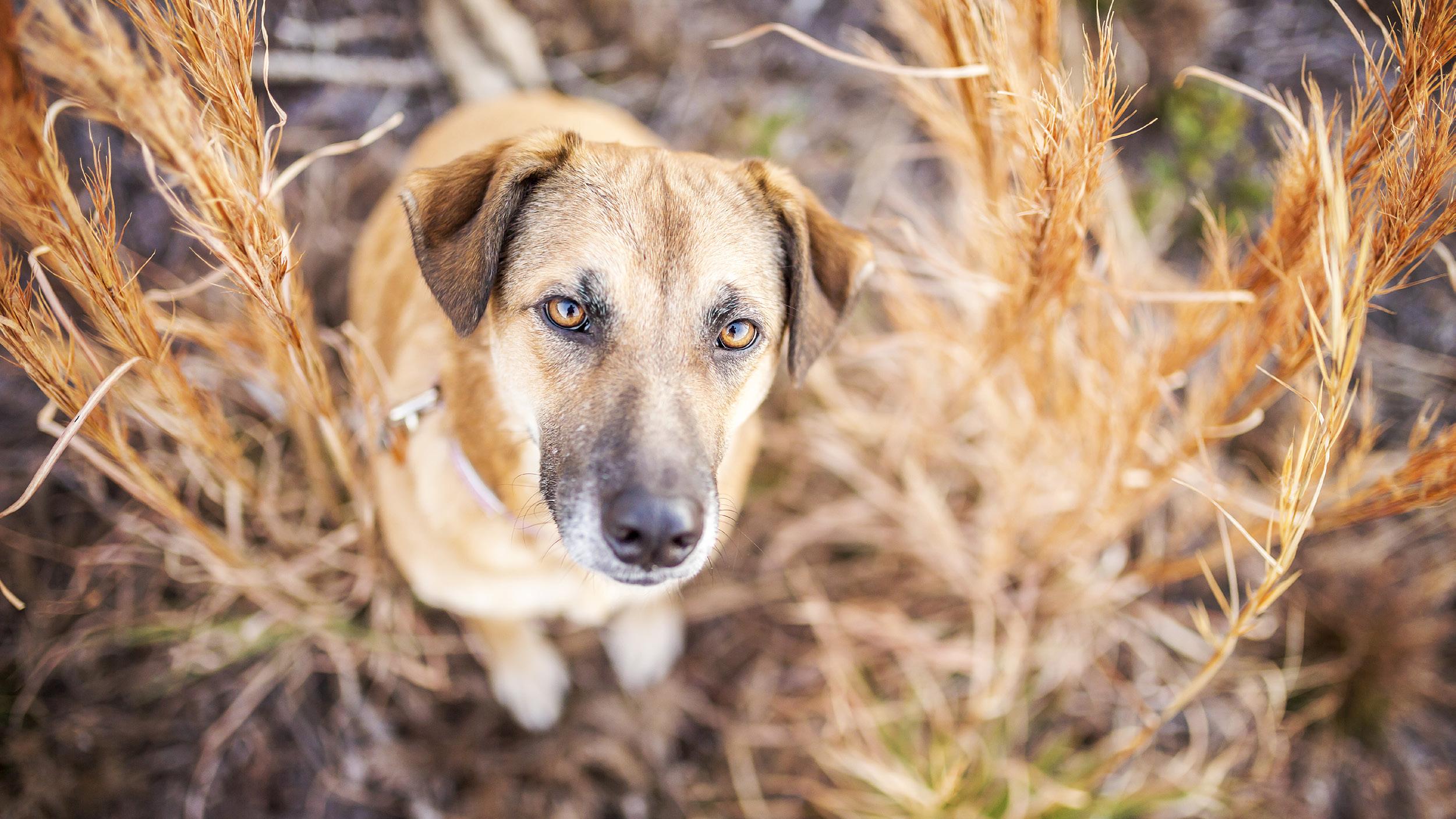
DQ | 8C 23 DOGS AT HOME

DQ | 8C 24 DOGS AT HOME
6. THE JOY OF GIVING A SENIOR DOG A LOVING HOME
One of the best aspects of adopting a senior dog is the joy of giving them a second chance. Senior dogs are often overlooked in shelters and rescue organisations, waiting longer for homes compared to their younger counterparts. By adopting a senior dog, you are:
• Providing a forever home: Offering love and care during their golden years.
- Saving a life: Freeing up space in shelters for other animals in need.
• Creating a bond: Many senior dogs show immense gratitude and loyalty to their adopters, creating a deep and rewarding bond.
FINAL THOUGHTS
Adopting a senior dog is a decision filled with numerous benefits. From their calm demeanour and established personalities to the ease of integrating them into your home, senior dogs make wonderful companions. Moreover, the act of giving an older dog a loving home during their golden years is incredibly fulfilling. If you’re considering adding a new canine companion to your family, don’t overlook the seniors. They have so much love to give and can bring immeasurable joy and companionship into your life.
DQ | 8C 25 DOGS AT HOME
TOP TIPS
FOR KEEPING YOUR DOG SAFE AND HAPPY IN THE COLD
DQ | 8C 26
7
DOG HEALTH
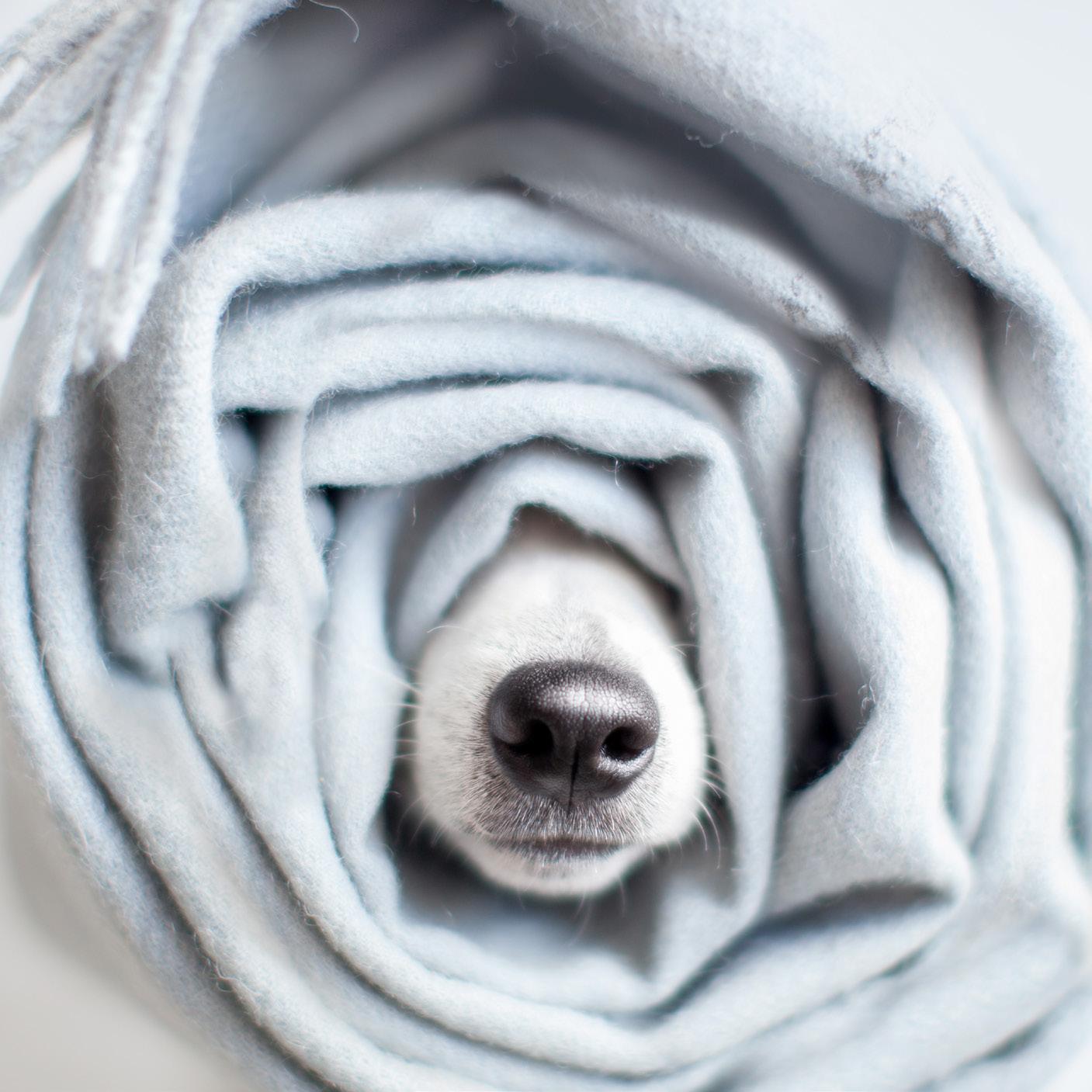
As winter approaches, it's essential to adapt your dog's care routine to ensure their health, safety, and happiness during the colder months. Whether you're dealing with frosty temperatures, snow, or ice, this guide will help you manage your dog's winter needs effectively.
KEEPING WARM
• Winter clothing: Not all dogs have thick, insulating coats. Short-haired breeds, small dogs, puppies, and older dogs can benefit from wearing sweaters or jackets. Make sure the clothing fits well and doesn't restrict movement.
• Comfort: Ensure your dog has a warm, comfortable place to sleep. Consider using padded bedding or heated pet mats. Keep their sleeping area away from drafts and cold floors.
DQ | 8C 27 DOG HEALTH
ONE
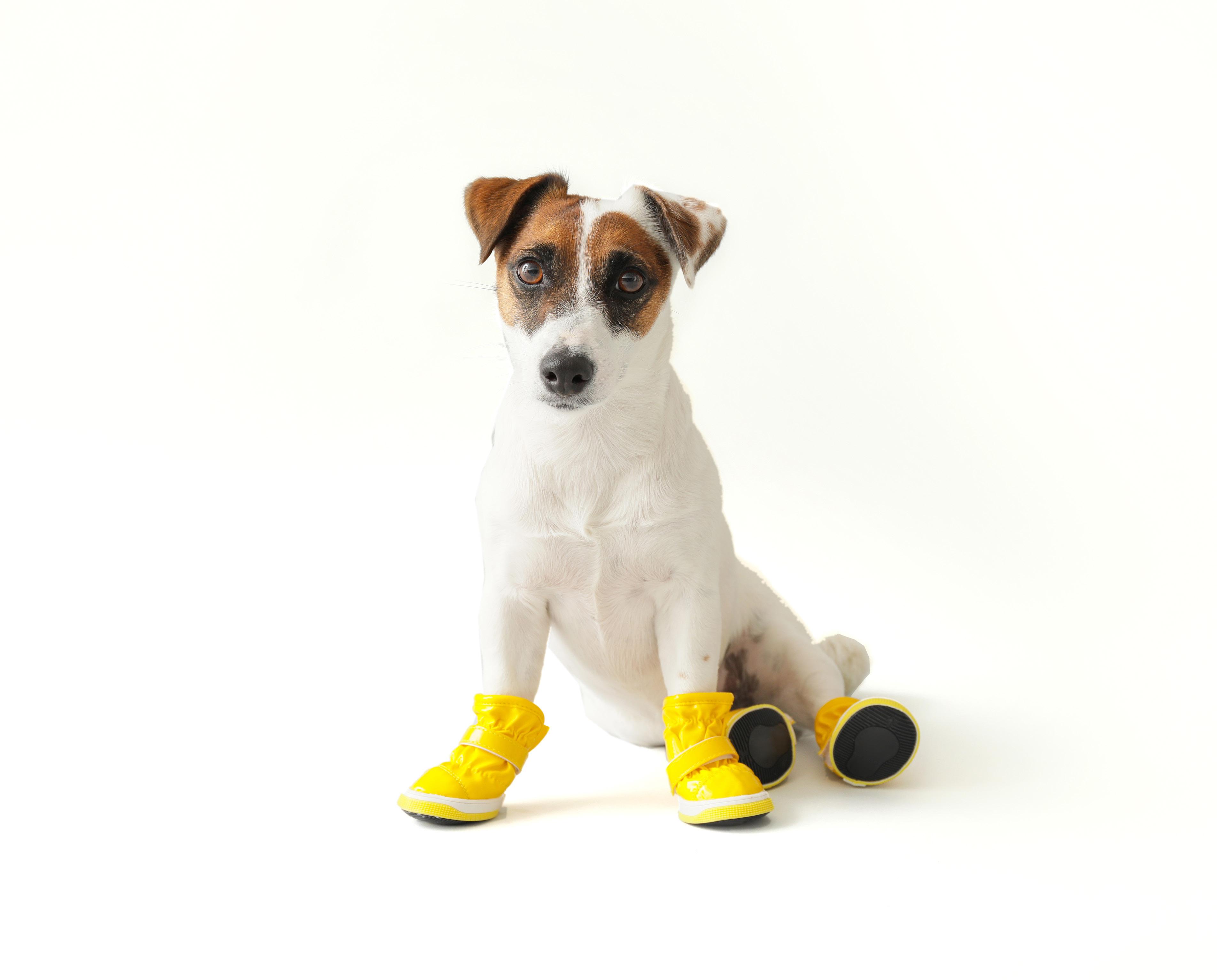
OUTDOOR SAFETY
• Limited exposure: Monitor the time your dog spends outside. Limit walks and playtime to prevent prolonged exposure to the cold, especially for breeds not suited to cold weather.
• Paw protection: Salt, ice, and cold pavements can be harsh on your dog's paws. Use dog booties to protect their feet or apply a paw balm before and after walks. Regularly check for cracks or irritation.
• Reflective gear: Winter days are shorter, and visibility can be low. Equip your dog with reflective collars, leashes, and jackets to ensure they are visible during walks in low-light conditions.
DQ | 8C 28
DOG HEALTH
2
three
EXERCISE AND PLAY
• Indoor activities: Keep your dog mentally and physically stimulated indoors with interactive toys, puzzle feeders, and games. Hide and seek, tug-of-war, and fetch can all be adapted for indoor play.
• Shorter, frequent walks: Instead of long walks, consider shorter, more frequent outings. This helps your dog stay active without being exposed to the cold for too long.
• Snow play: If your dog enjoys the snow, supervise their play to prevent overexposure to the cold. Be mindful of ice and hidden hazards under the snow.
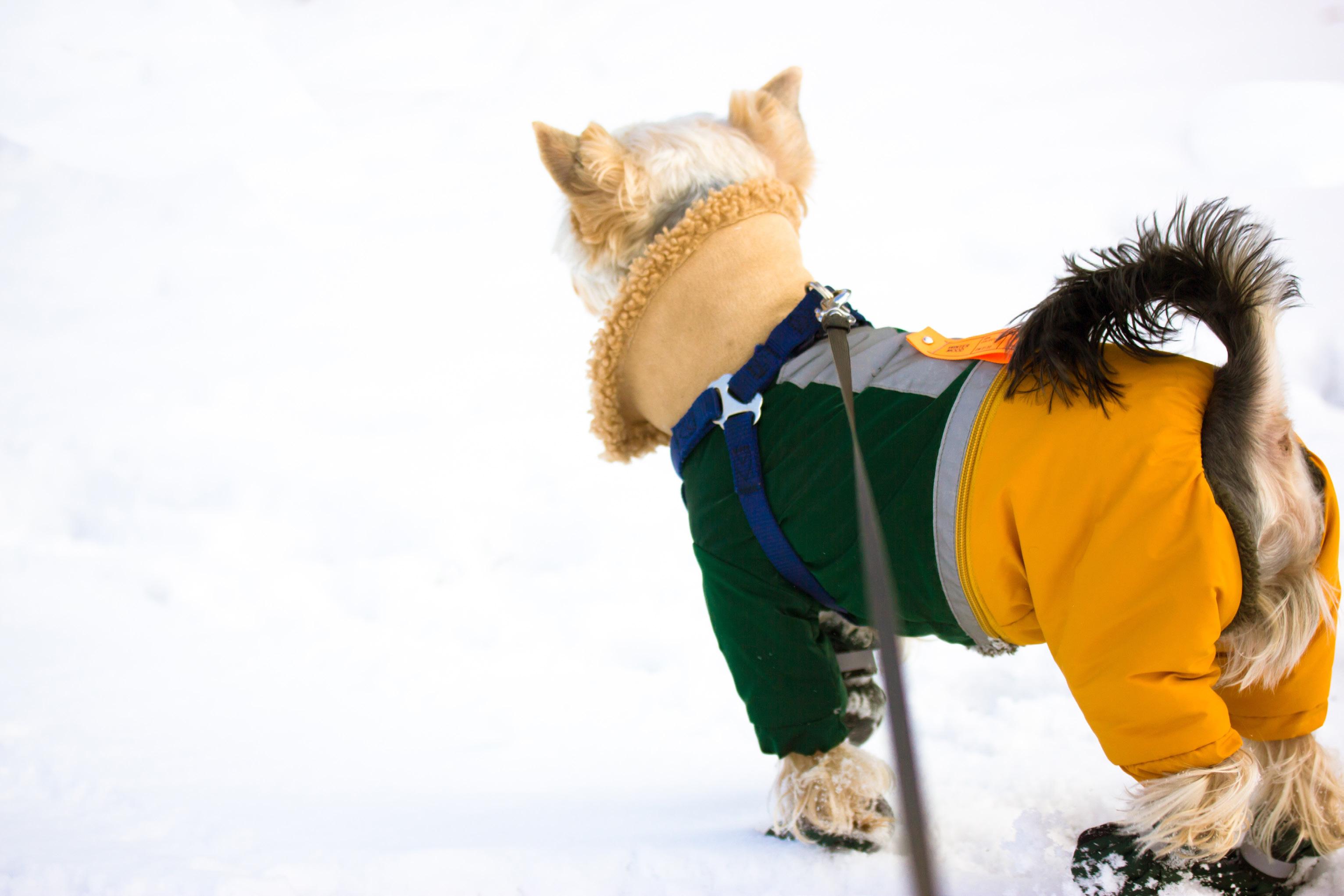
DOG HEALTH

DIET AND NUTRITION
• Adjusted feeding: Cold weather can increase your dog’s energy needs. Consult your veterinarian about adjusting their diet to maintain a healthy weight. However, avoid overfeeding to prevent weight gain.
• Hydration: Ensure your dog has access to fresh water at all times. Outdoor water bowls can freeze, so check them regularly and consider using heated bowls if necessary.
DQ | 8C 30 DOG HEALTH
FOUR

HEALTH CHECKS
• Regular vet visits: Winter can exacerbate certain health conditions, such as arthritis. Regular vet check-ups can help manage any health issues and ensure your dog is in good shape to handle the cold.
• Vaccinations and parasite control: Cold weather does not eliminate the risk of certain diseases and parasites. Keep up with vaccinations and parasite control to protect your dog year-round.
DQ | 8C 31 DOG HEALTH
5
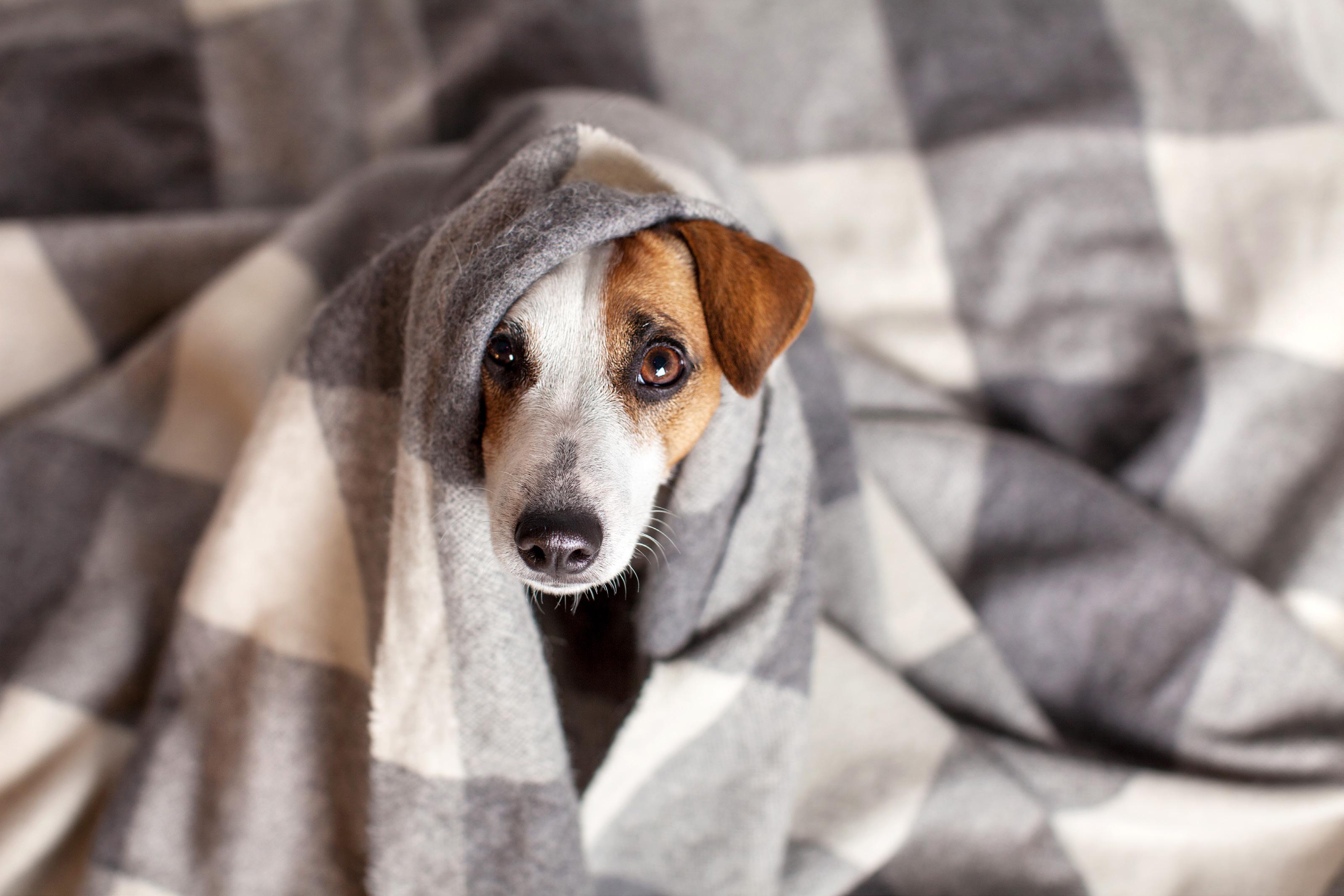
EMERGENCY PREPAREDNESS
• Winter kit: Prepare a winter emergency kit for your dog, including extra food, water, medications, a blanket, and a first-aid kit. This is particularly important if you live in an area prone to severe weather or if you are travelling in the car with your dog during inclement weather.
DQ | 8C 32 DOG HEALTH
SIX
SPECIAL CONSIDERATIONS
• Senior dogs: Older dogs may have a harder time regulating their body temperature and could suffer more from the cold. Provide extra warmth and consider shorter, more frequent outings.
• Puppies: Young puppies are also more vulnerable to the cold. Limit their outdoor exposure and ensure they have a warm, safe environment indoors.
FINAL THOUGHTS
Managing your dog’s needs during winter requires some adjustments, but with the right preparation, you can keep your furry friend safe, healthy, and happy all season long. By providing warmth, protecting against the elements, and ensuring adequate exercise and nutrition, you and your dog can enjoy the winter months together. Always consult your veterinarian for specific advice tailored to your dog's individual needs.
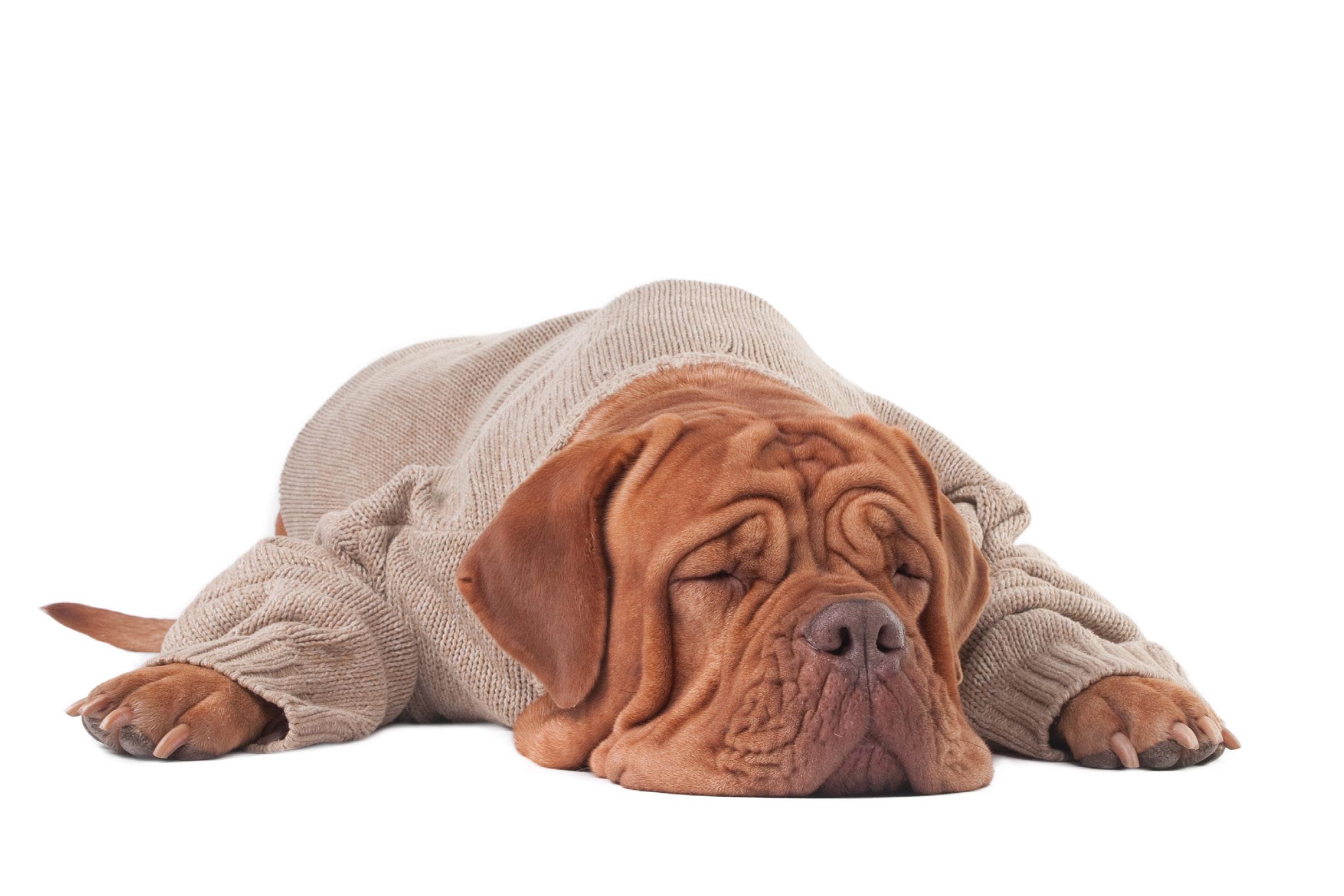
DQ | 8C 33 DOG HEALTH
7
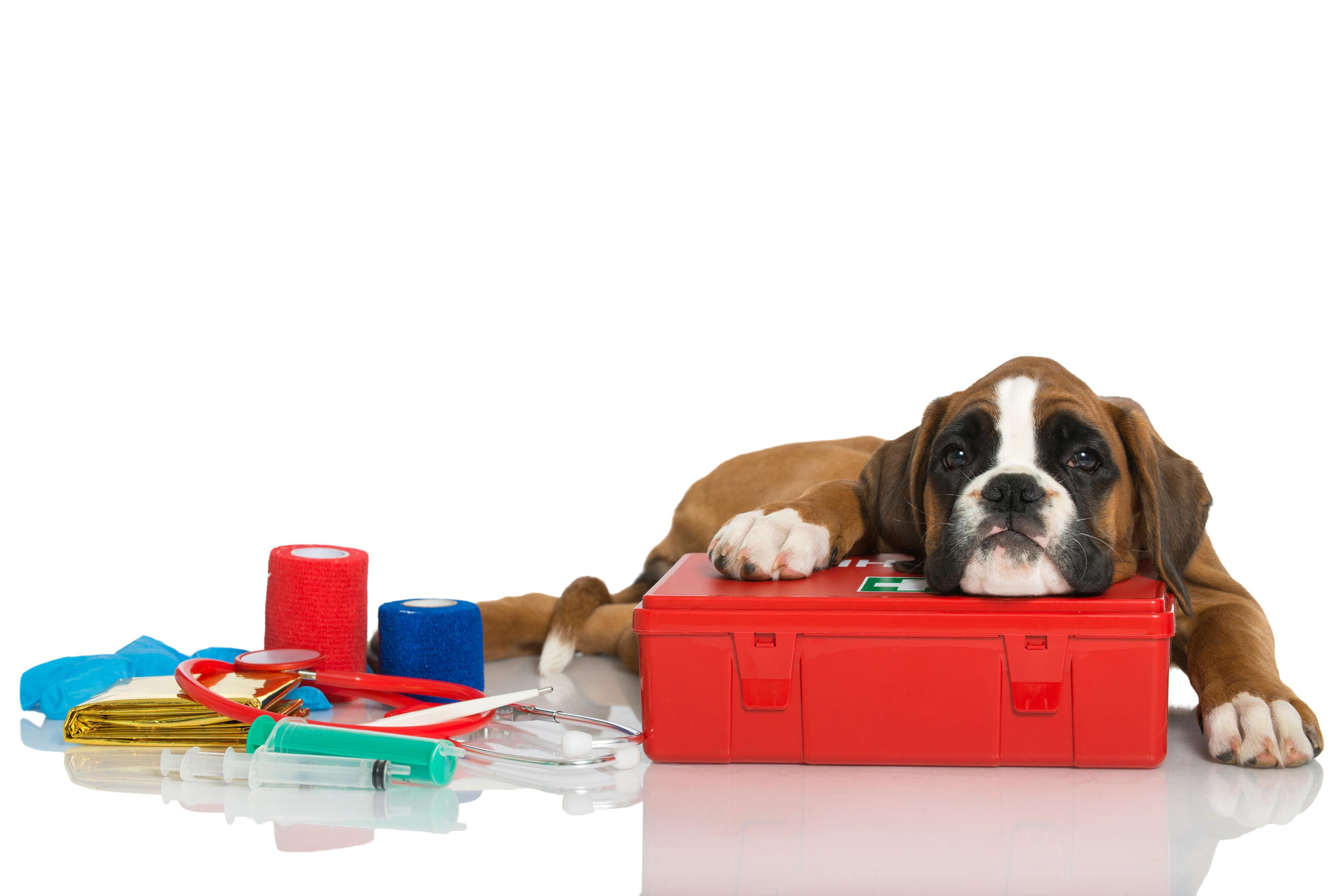
BUILDING A CANINE FIRST AID KIT
As a responsible dog owner, being prepared for emergencies is crucial. A well-stocked canine first aid kit can be a lifesaver in unexpected situations, whether at home, on the road, or during outdoor adventures. Here’s a comprehensive checklist of essential items to include in your canine first aid kit and tips on using them.
ESSENTIAL ITEMS FOR EMERGENCIES
DQ | 8C 34 DOG HEALTH
ESSENTIAL ITEMS FOR YOUR FIRST AID KIT
1. Emergency contact information
• Vet’s phone number: Have your regular vet’s contact details readily available.
• Emergency vet clinic: Ensure you also have the contact information of the nearest 24-hour emergency veterinary clinic.

IMPORTANT
Always consult your vet if you are concerned about your dog’s health or wellbeing. A first aid kit helps you to manage emergencies while you get your dog to the vet or, at the very least, discuss the issue with your vet; it does not replace professional veterinary care.
DQ | 8C 35 DOG HEALTH
2. Basic first aid supplies
• Digital thermometer: To check your dog’s temperature.
• Petroleum jelly: To lubricate the thermometer.
• Muzzle: Even the gentlest dogs may bite when in pain. A muzzle ensures safety during treatment.
• Syringes of varying sizes: For administering oral medications or flushing wounds.
• Instant cold pack: To reduce swelling and pain.
• Blanket or towel: For warmth or to use as a stretcher if needed.
• Tick remover tool: For safely and effectively removing ticks.
• Gauze pads and rolls: For dressing wounds and controlling bleeding.
• Adhesive tape: To secure gauze and bandages in place.
• Non-stick bandages: To cover wounds without sticking to fur or skin.
• Self-adhesive wrap: This is used to secure bandages without using tape (e.g., Vet Wrap).
• Cotton balls and swabs: For cleaning wounds and applying medications.
• Scissors: Blunt-tipped scissors for cutting bandages and gauze.
• Tweezers: For removing splinters and other foreign objects.
• Nail clippers or grinder: For dealing with broken or damaged nails.
• Disposable gloves: To maintain hygiene while treating wounds.
• Ear cleaner: This is used to clean and treat minor ear issues. Follow the instructions on the packet for use.
• Styptic powder or pencil: To stop minor bleeding from nails or small cuts.
• Dog first aid manual.
DQ | 8C 36 DOG HEALTH
3. Medications
• Antiseptic wipes/solution: For cleaning wounds (e.g., Betadine or Chlorhexidine).
• Saline solution: For flushing out wounds or eyes.
• Antibiotic ointment: To prevent infection in minor cuts and scrapes.
• Paw balm: To deal with cracked or chapped paws.
• Anti-allergy medication (if appropriate): For allergic reactions (consult your vet for the proper dosage).














DQ | 8C 37 DOG HEALTH
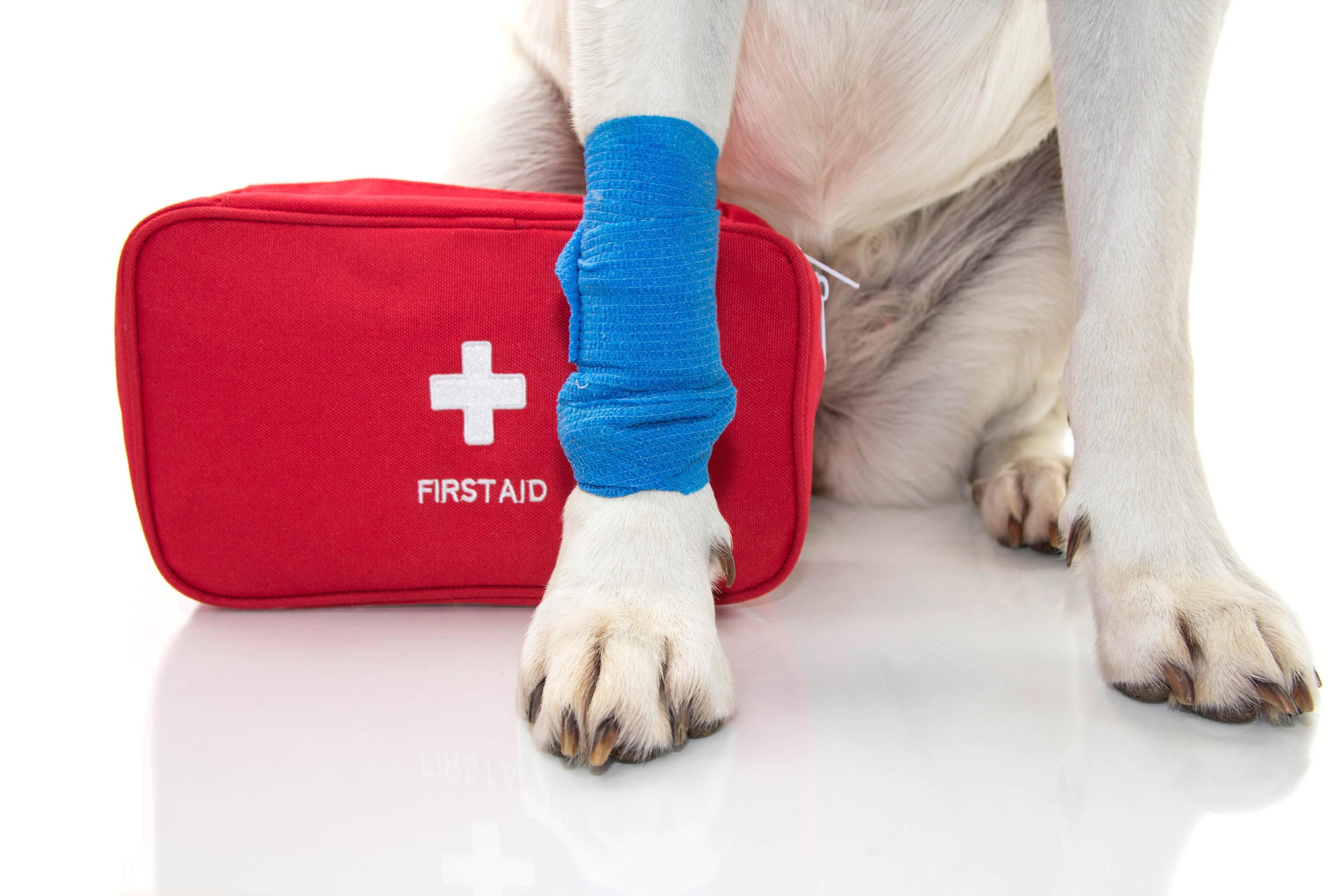
TIPS FOR USING YOUR FIRST AID KIT WOUND CARE
• Control bleeding: Apply direct pressure to the wound with a gauze pad. Use an adhesive bandage or wrap to secure it.
• Clean the wound: Use saline solution or antiseptic wipes to clean the wound gently. Avoid using hydrogen peroxide or alcohol directly on the wound, as they can delay healing.
• Bandage the wound: Cover the wound with a non-stick bandage and secure it with self-adhesive wrap.
Ensure the bandage fits snugly but is not too tight to cut off circulation.
HANDLING ALLERGIC REACTIONS
• Administer anti-allergy medication as instructed by your vet: If your dog shows signs of an allergic reaction, such as swelling, hives, or itching, administer the appropriate dose of antiallergy medication. Always consult your vet for the correct dosage based on your dog’s weight.
• Monitor breathing: If your dog has difficulty breathing, seek immediate veterinary assistance.
DQ | 8C 38 DOG HEALTH

REMOVING TICKS
• Use a tick remover: Grasp the tick close to your dog’s skin with the tick remover and gently pull it out without twisting. Clean the area with antiseptic.
CHECKING TEMPERATURE
• Use a digital thermometer: Lubricate the thermometer with petroleum jelly and insert it gently into your dog’s rectum. A normal temperature range is between 38.3 and 39.2°C. Contact your vet if the temperature is outside this range.
FINAL THOUGHTS
A well-prepared canine first aid kit is an essential part of responsible pet ownership. By including these essential items and understanding how to use them, you can provide immediate care in emergencies and potentially save your dog’s life. Regularly check and update your kit to ensure all supplies are in good condition and within their expiration dates. Always consult your veterinarian for advice tailored to your dog’s specific health needs.
DQ | 8C 39 DOG HEALTH
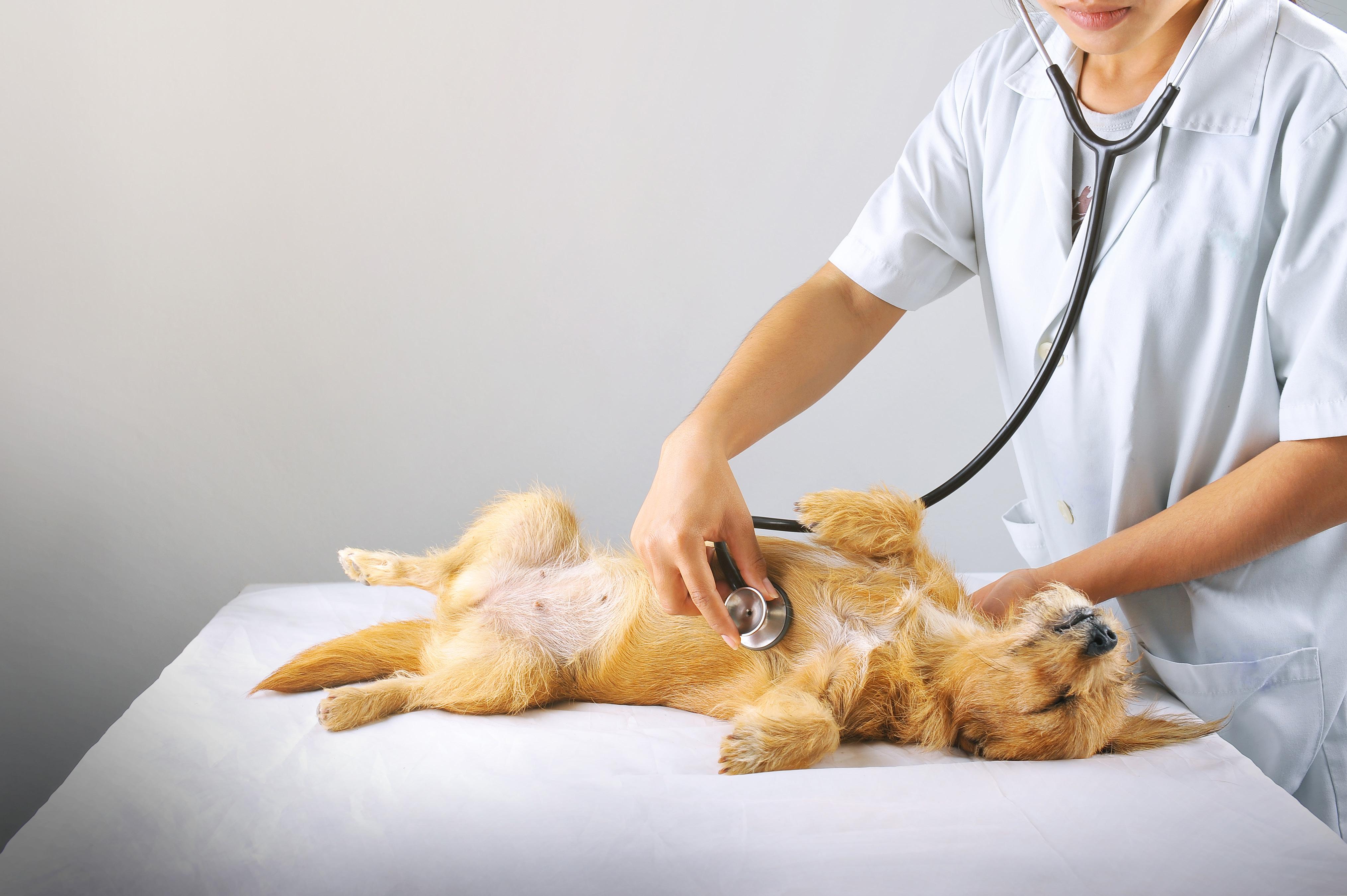
Regular vet visits
PREVENTATIVE CARE FOR CANINE HEALTH
As a dog owner, you want to ensure your furry friend lives a long, healthy, and happy life. Crucial aspects of achieving this include both preventing illness from arising and detecting any diseases that do occur as early as possible. With this in mind, routine vet visits are not just for when your dog is sick; they play a vital role in preventative care, helping to prevent, detect and address potential health issues early.
DQ | 8C 40 DOG HEALTH

DQ | 8C 41 DOG HEALTH
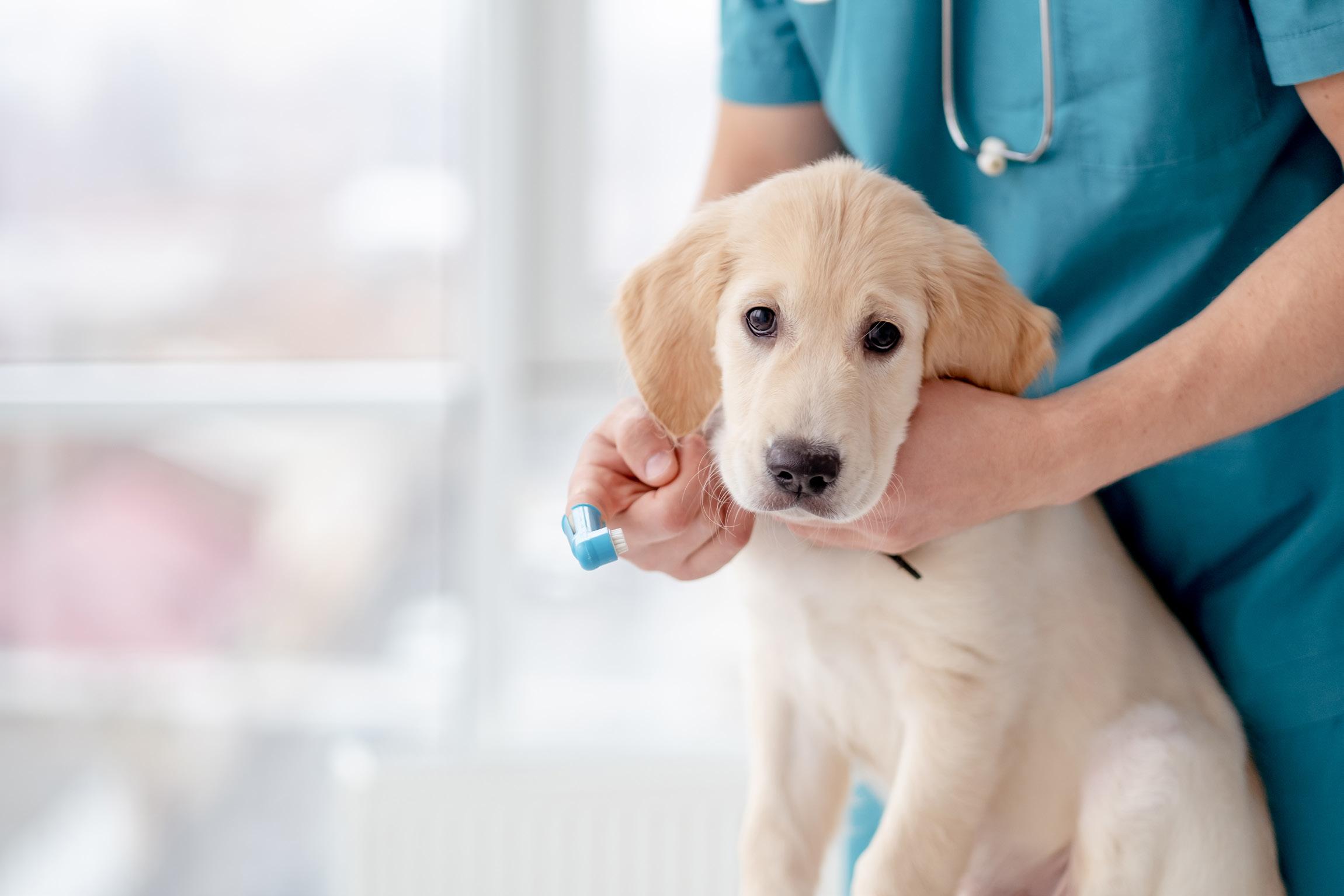
Here’s why regular vet visits are essential for your dog’s wellbeing:
DETECTION OF HEALTH ISSUES
Regular vet visits allow for early detection of health problems, which can significantly improve the outcome of treatment. During a check-up, your veterinarian will perform a thorough physical examination, checking for signs of illness or abnormalities that may not be apparent to you. Early detection means:
• Better prognosis: Conditions such as cancer, heart disease, and diabetes can be managed more effectively when caught early.
• Less invasive treatment: Earlystage diseases often require less aggressive treatments, reducing stress and discomfort for your dog.
• Cost savings: Treating health issues early can prevent the need for more expensive, extensive treatments later on.
DQ | 8C 42 DOG HEALTH
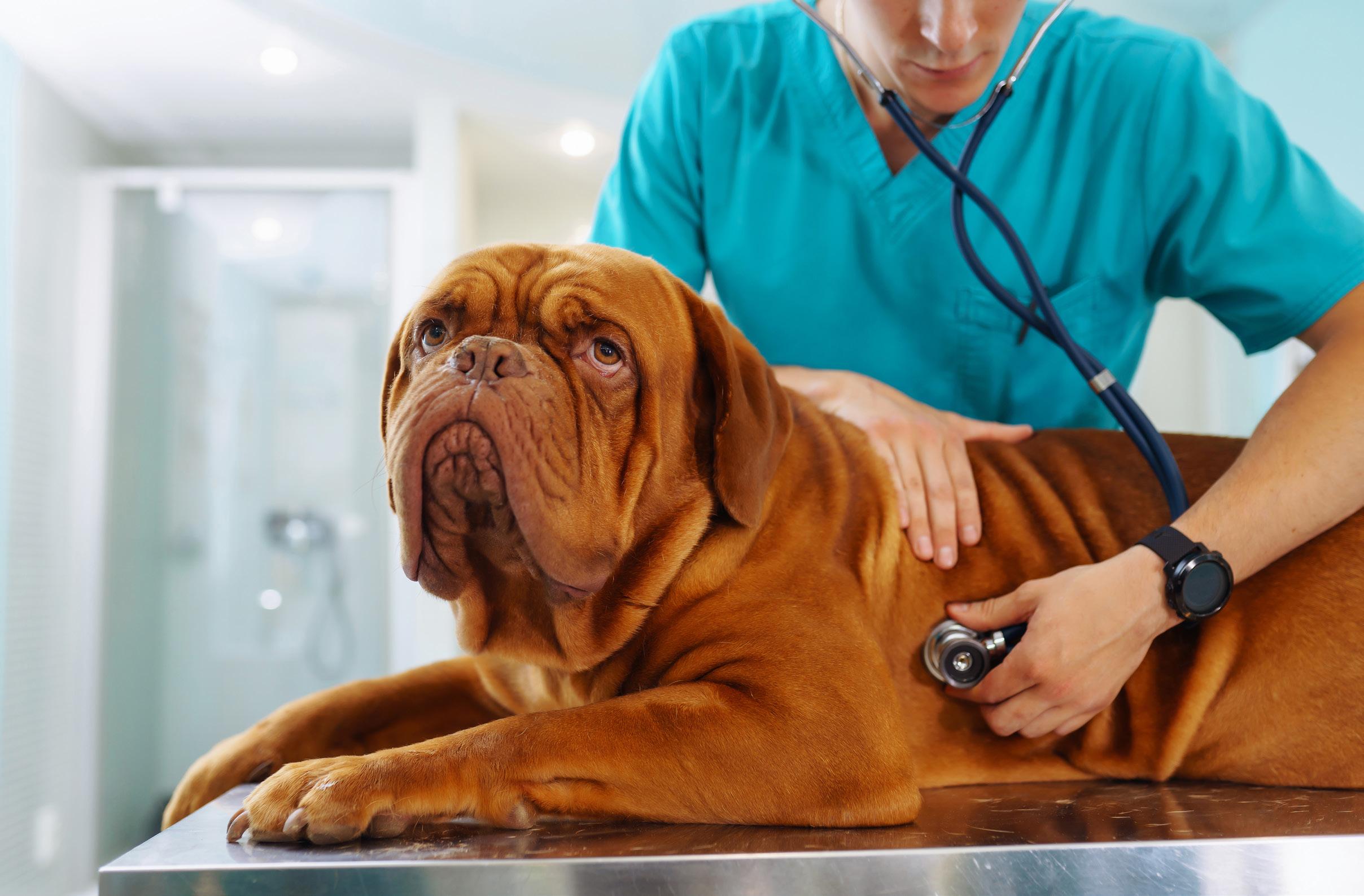
• Maintaining a healthy weight: Obesity can lead to numerous health issues, including joint problems and heart disease. Your vet can provide dietary and exercise recommendations to keep your dog at a healthy weight.
COMPREHENSIVE HEALTH MONITORING
Regular check-ups provide a comprehensive view of your dog’s health over time. Your vet will track important health metrics, such as weight, dental health, and organ function, allowing them to identify any trends or changes that might indicate a problem. This ongoing monitoring helps in:
• Dental health: Dental disease is common in dogs and can lead to more serious health issues if left untreated.
Regular dental check-ups and cleanings can prevent painful conditions and maintain overall health.
• Age-related issues: As dogs age, they become more susceptible to certain health conditions. Regular vet visits ensure that any trends towards age-related issues are detected and managed early.
DQ | 8C 43 DOG HEALTH

VACCINATIONS AND PARASITE CONTROL
Preventative care includes keeping your dog up to date with vaccinations and parasite control. Regular vet visits ensure that your dog is protected against common diseases and parasites, such as:
• Vaccinations:* Core vaccines, like those for rabies, distemper, and
parvovirus, are essential for preventing life-threatening diseases. Your vet will develop a vaccination schedule tailored to your dog’s needs.
• Parasite prevention: Fleas, ticks, and worms can cause serious health problems for your dog. Your vet will recommend appropriate preventative treatments and check for signs of infestation during regular visits.
DQ | 8C 44 DOG HEALTH
TAILORED HEALTH ADVICE
Every dog is unique, and their health care should be too. Regular vet visits allow your vet to know your dog, providing an opportunity for you to receive personalised advice based on your dog’s specific needs, lifestyle, and health status. This advice can include:
• Nutrition: Your vet can recommend the best diet for your dog’s age, breed, and health condition, ensuring they receive the proper nutrients.
• Exercise: Regular exercise is vital for maintaining your dog’s physical and mental health. Your vet can suggest appropriate activities and exercise routines.
• Behavioural issues: If your dog is experiencing behavioural problems, such as anxiety or aggression, your vet can provide guidance and recommend behaviour modification techniques or refer you to a specialist.

DQ | 8C 45 DOG HEALTH
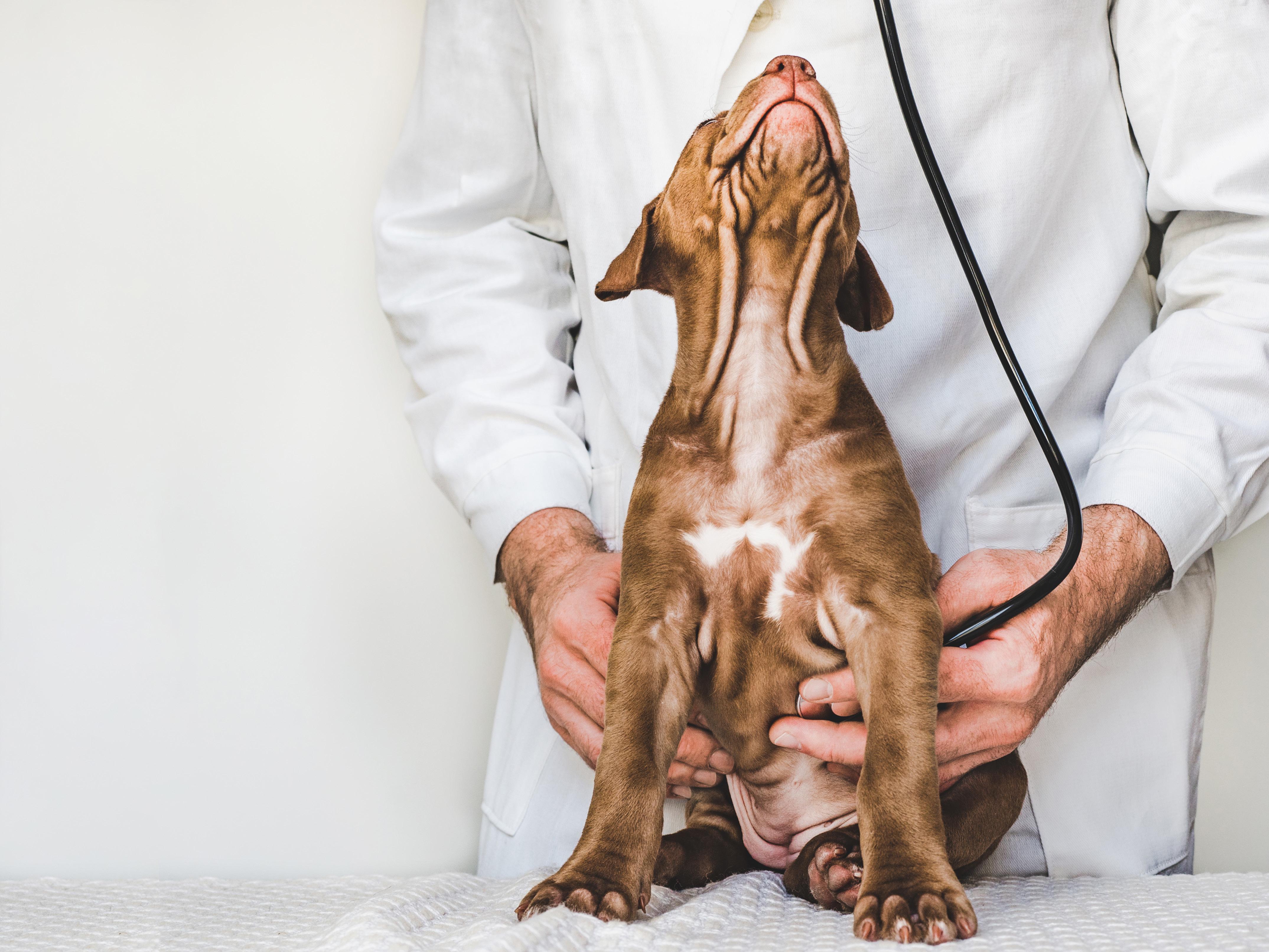
DQ | 8C 46 DOG HEALTH

BUILDING A STRONG VET-PET RELATIONSHIP
Regular visits help build a strong relationship between your dog and their vet. This familiarity can reduce stress and anxiety during visits, making the experience more positive for your dog. A good relationship with your vet also means:
• Better communication: You’ll feel more comfortable discussing concerns and asking questions, leading to better care for your dog.
• Trust: Trust in your vet’s expertise and recommendations ensures that you can make informed decisions about your dog’s health.
FINAL THOUGHTS
Regular vet visits are a cornerstone of preventative care, ensuring your dog stays healthy and happy throughout their life. By detecting health issues early, monitoring overall wellbeing, maintaining vaccinations and parasite control, and receiving tailored health advice, you can give your furry friend the best possible care. Remember, prevention is always better than cure, and routine veterinary care is the key to a long, healthy life for your beloved dog. Schedule that check-up today and invest in your dog’s health and happiness.
DQ | 8C 47
DOG HEALTH
HOW TO YOUR DOG
SOCIALISE
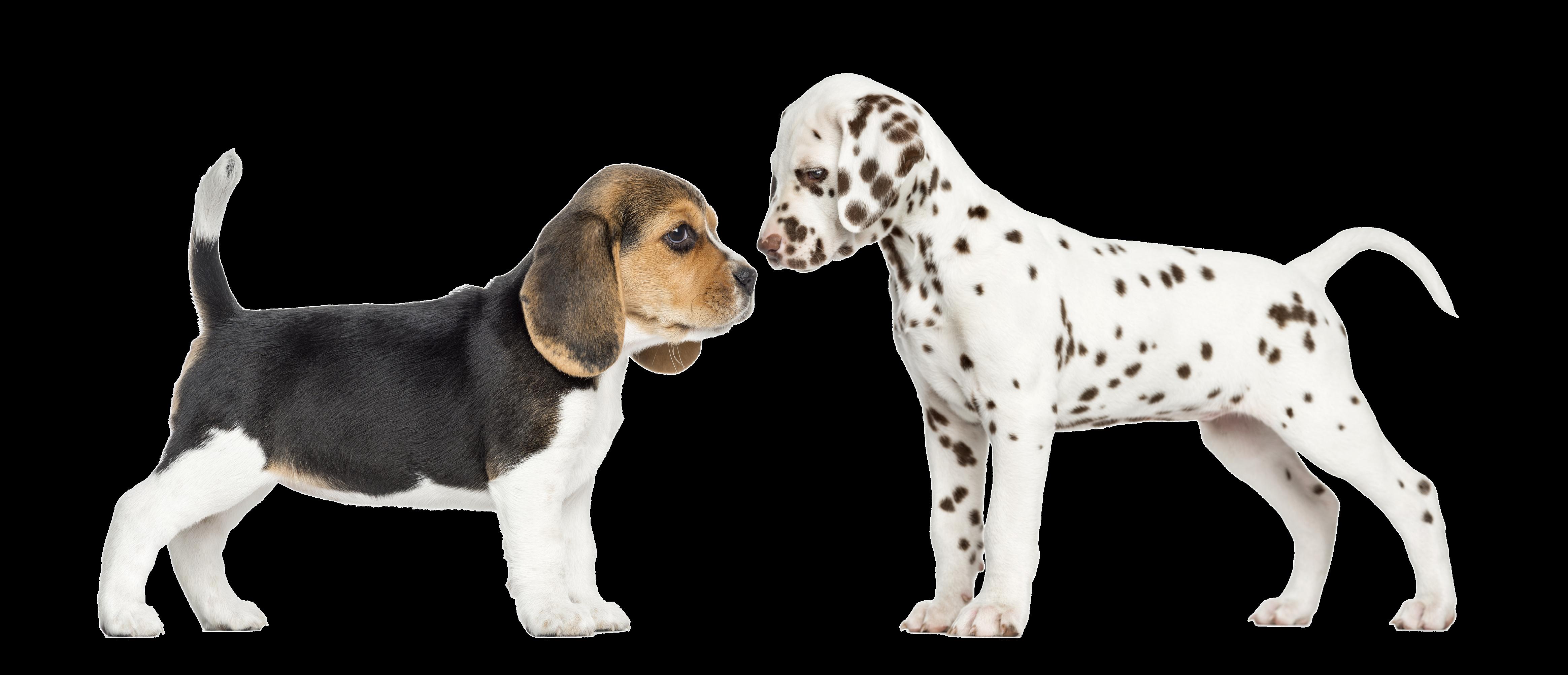
TIPS FOR A WELL-ADJUSTED PET
DQ | 8C 48 DOG TRAINING
Socialisation is a crucial part of raising a well-adjusted and happy dog. A well-socialised dog is comfortable and confident in various situations around different people, pets, and environments. Proper socialisation helps prevent behavioural issues and ensures your dog can interact safely and positively with the world around them. Here we give you some effective techniques for socialising your dog:
1. START EARLY
• Puppies: The prime time for socialisation is between three and 14 weeks of age. During this period, puppies are more open to new experiences and learning about their surroundings.
• Older dogs: While it may take more time and patience, older dogs can still be socialised. Gradual exposure and positive reinforcement are key to helping them adapt.

DQ | 8C 49 DOG TRAINING
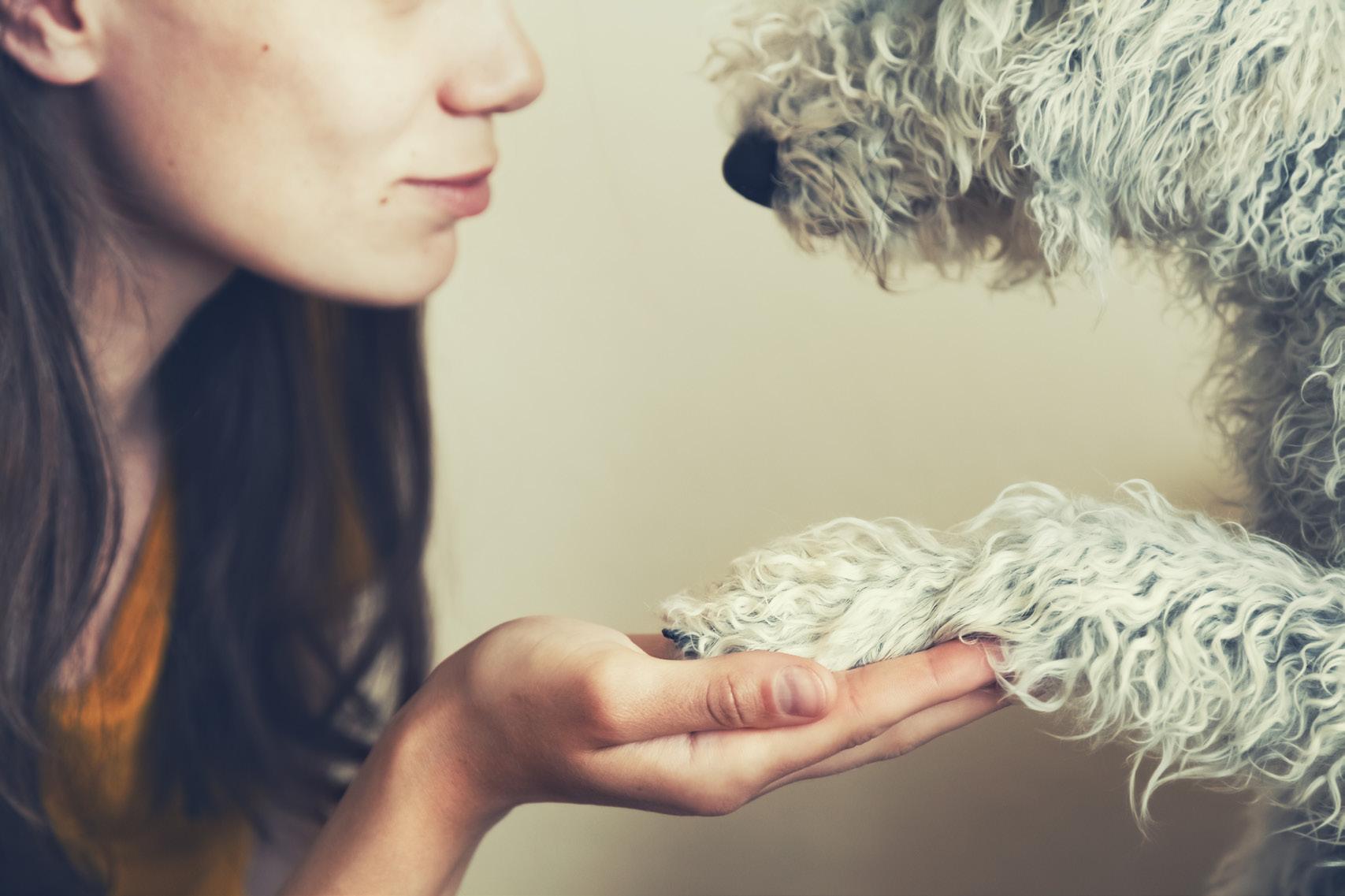
2. INTRODUCTIONS TO PEOPLE
• Variety is key: Expose your dog to a wide range of people. This helps them to become comfortable with various appearances and behaviours.
• Positive experiences: Ensure that all interactions are positive. Have people offer treats and strokes to create a positive association.
• Calm environment: Start introductions in a calm and controlled environment. Gradually increase the level of activity and noise as your dog becomes more comfortable.
DQ | 8C 50 DOG TRAINING
3. INTERACTIONS WITH OTHER DOGS
• Puppy classes and playdates: Enroll your puppy in a well-managed puppy class where they can interact with other puppies in a controlled setting. Arrange playdates with dogs known to be friendly and well-socialised.
• On-leash introductions: For older dogs, start with on-leash introductions. Allow them to sniff and greet each other calmly. Look for signs of stress or aggression and intervene if necessary.
• Supervised play: Once comfortable, let your dog interact off-leash in a secure area. Always supervise these interactions to ensure they remain positive and safe.
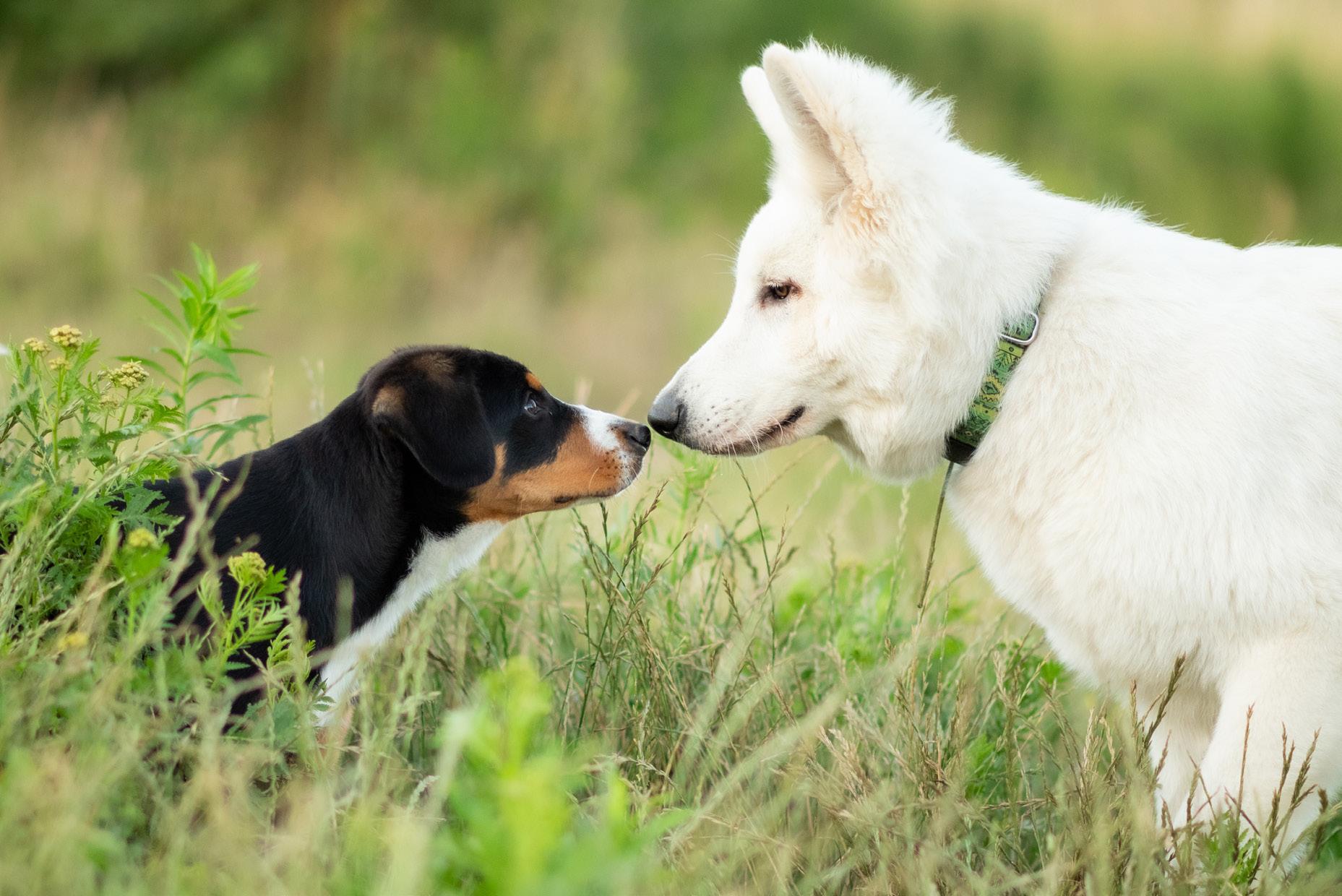
DQ | 8C 51 DOG TRAINING

4. EXPOSURE TO DIFFERENT ENVIRONMENTS
• Walks and outings: Take your dog on walks in different environments. Exposure to various sights, sounds, and smells helps build their confidence.
• Car rides: Introduce your dog to car rides to prevent anxiety associated with travel. Start with short trips and gradually increase the duration.
• Public places: Bring your dog to petfriendly stores, cafes, and other public places. Ensure they are comfortable and not overwhelmed by the new surroundings.
DQ | 8C 52 DOG TRAINING
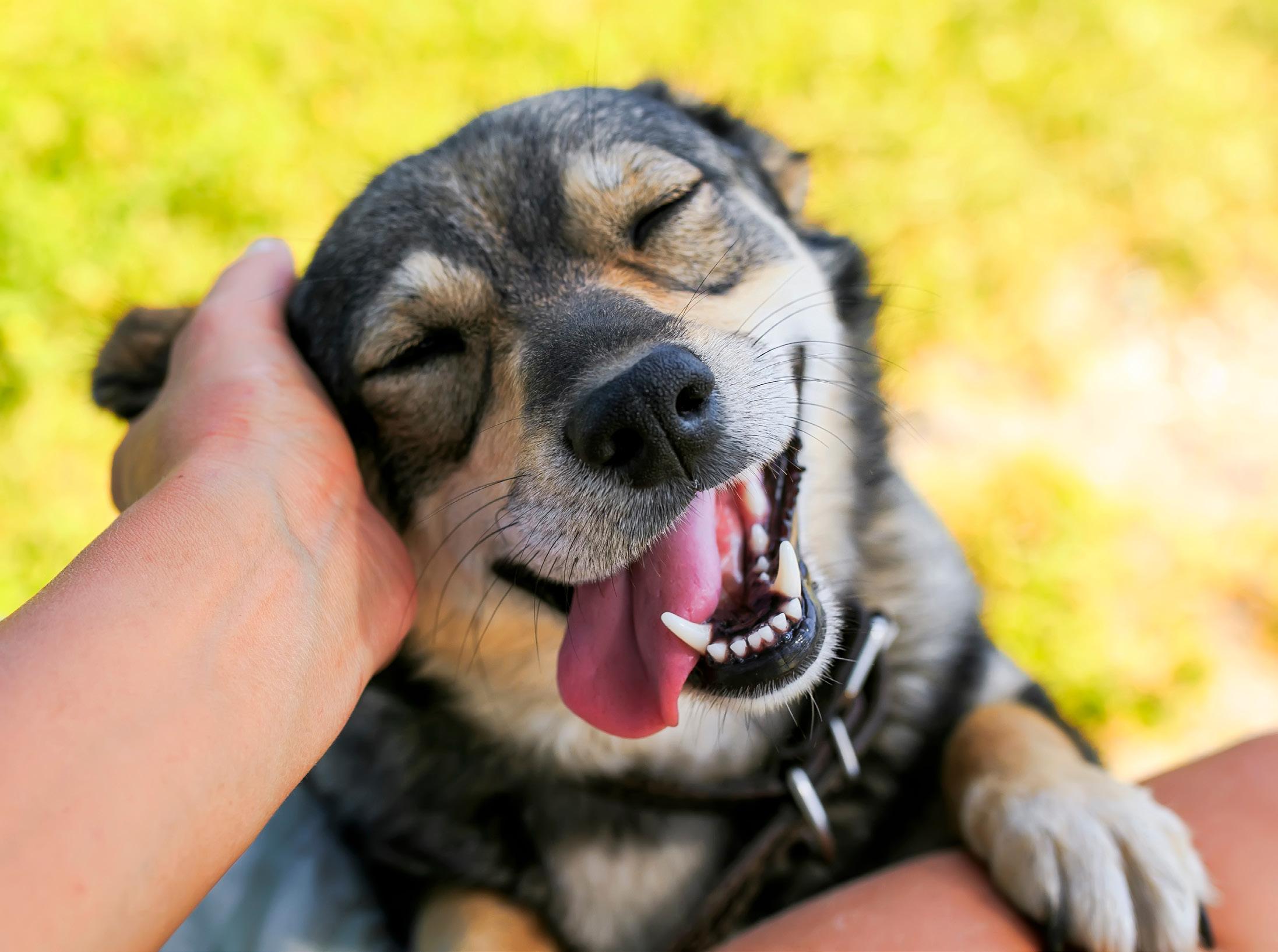
5. HANDLING AND GROOMING
• Regular handling: Get your dog used to being touched and handled by gently touching their paws, ears, mouth, and tail. Reward them with treats and praise for staying calm.
• Grooming: Regularly groom your dog, including brushing, nail trimming, and bathing. Introduce these activities slowly and make them a positive experience with treats and praise.
DQ | 8C 53 DOG TRAINING
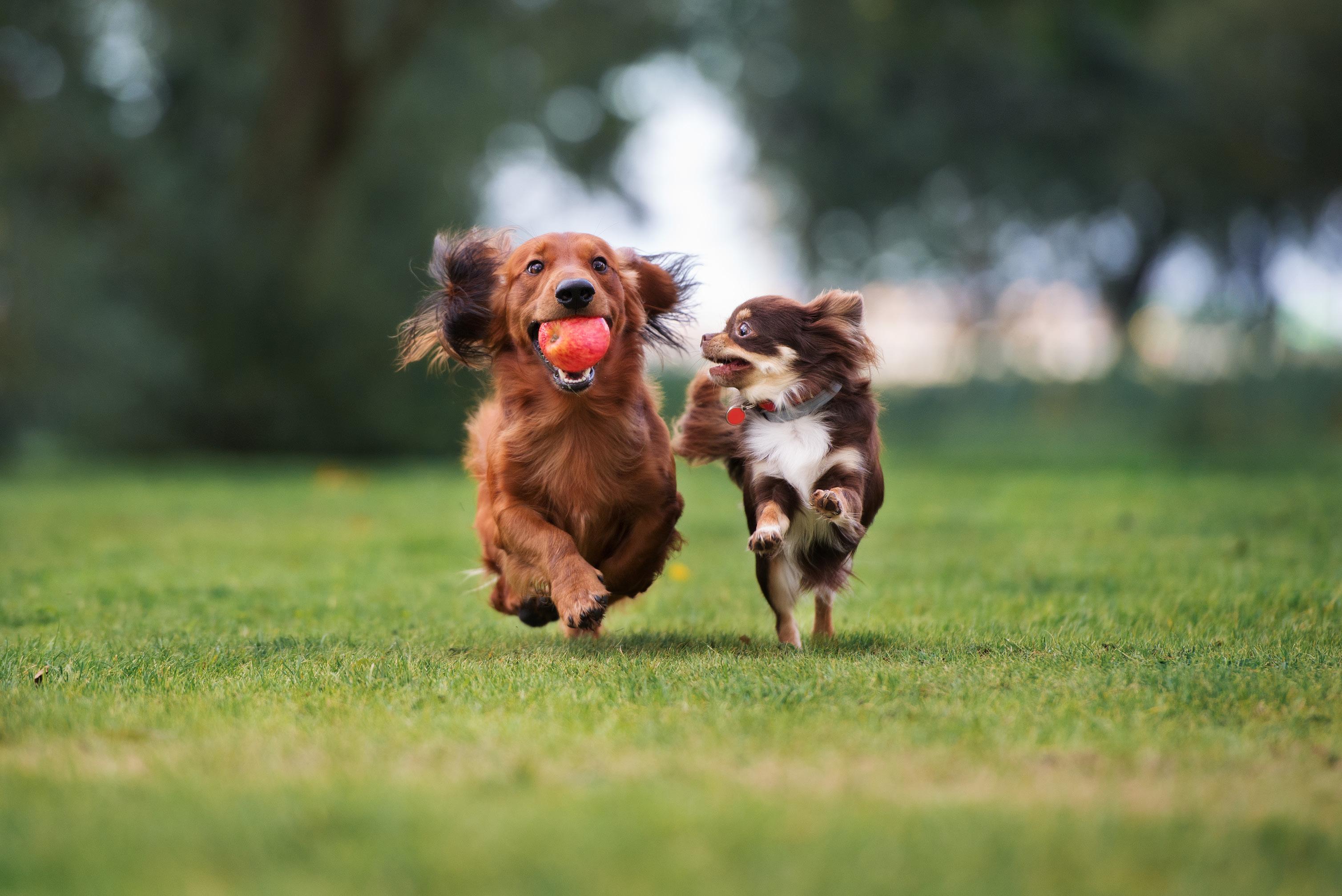
6. SOUNDS AND UNFAMILIAR OBJECTS
• Desensitisation: Expose your dog to various sounds, such as vacuum cleaners, doorbells, and traffic noise. Start with low volumes and gradually increase the intensity.
• Objects: Introduce your dog to different objects, such as umbrellas, hats, and bicycles. Let them sniff and investigate at their own pace.
DQ | 8C 54 DOG TRAINING
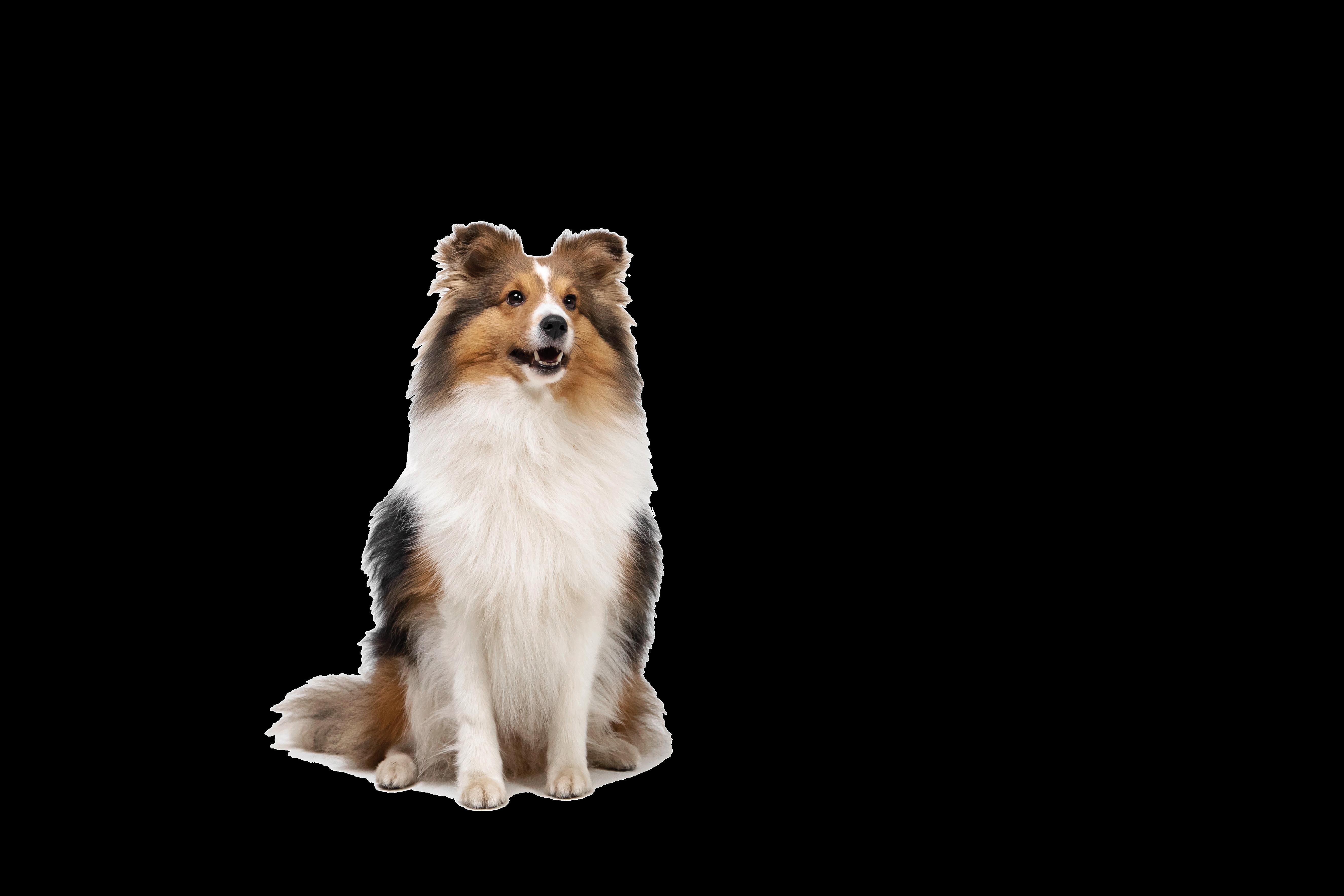
7. TRAINING AND POSITIVE REINFORCEMENT
• Basic commands: Teach your dog basic commands like sit, stay, and come. Training helps establish communication and reinforces good behaviour.
• Reward-based training: Use positive reinforcement techniques, such as treats, praise, and toys, to reward your dog for calm and appropriate behaviour.
DQ | 8C 55 DOG TRAINING
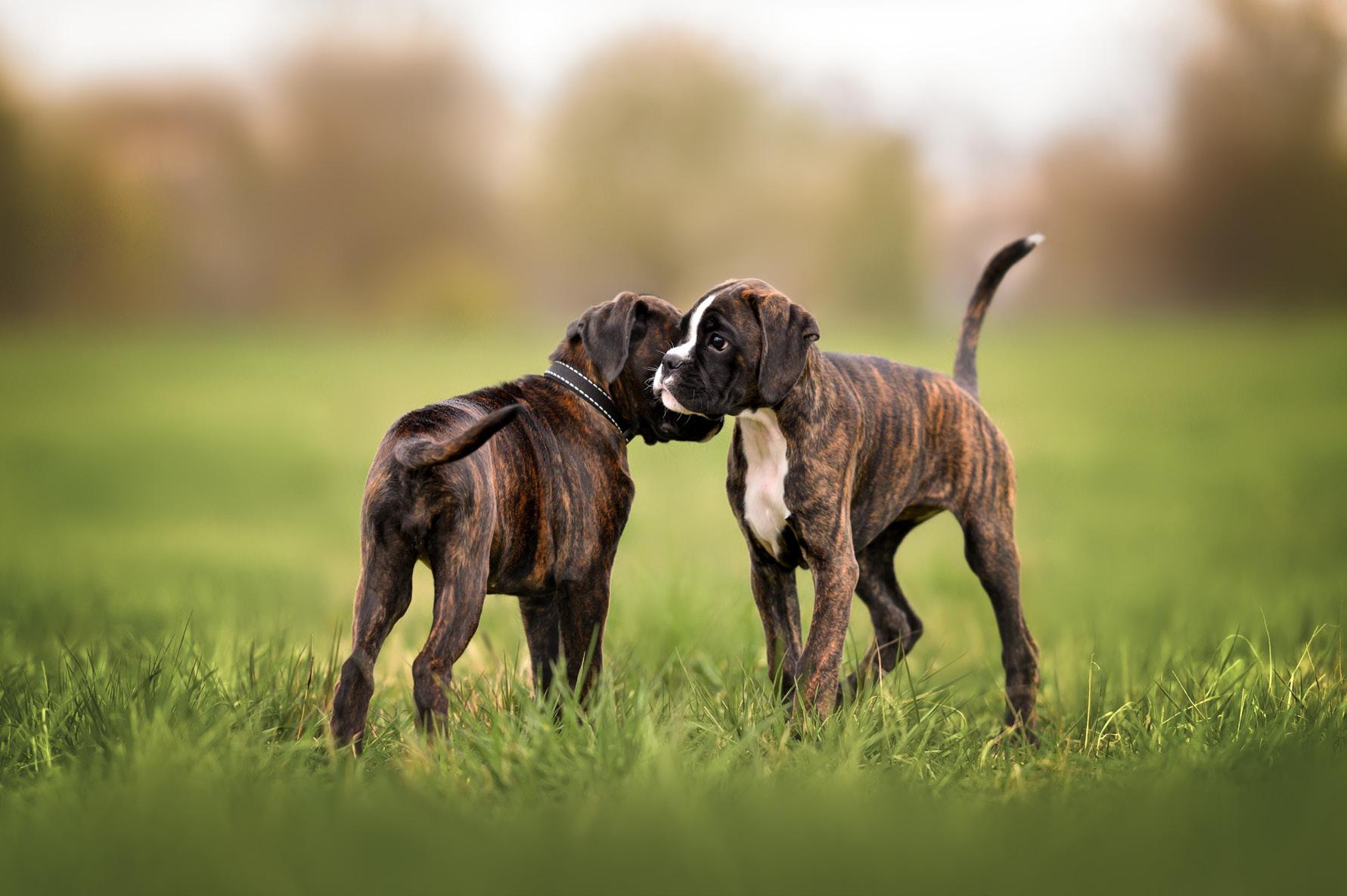
8. RESPECT THEIR LIMITS
• Watch for stress signs: Pay attention to signs of stress or fear, such as tucked tails, flattened ears, or excessive panting. If your dog appears uncomfortable, remove them from the situation and try again later.
• Go at your dog’s pace: Every dog is different. Some may adapt quickly, while others need more time. Be patient and progress at a pace that is comfortable for your dog.
DQ | 8C 56
TRAINING
DOG
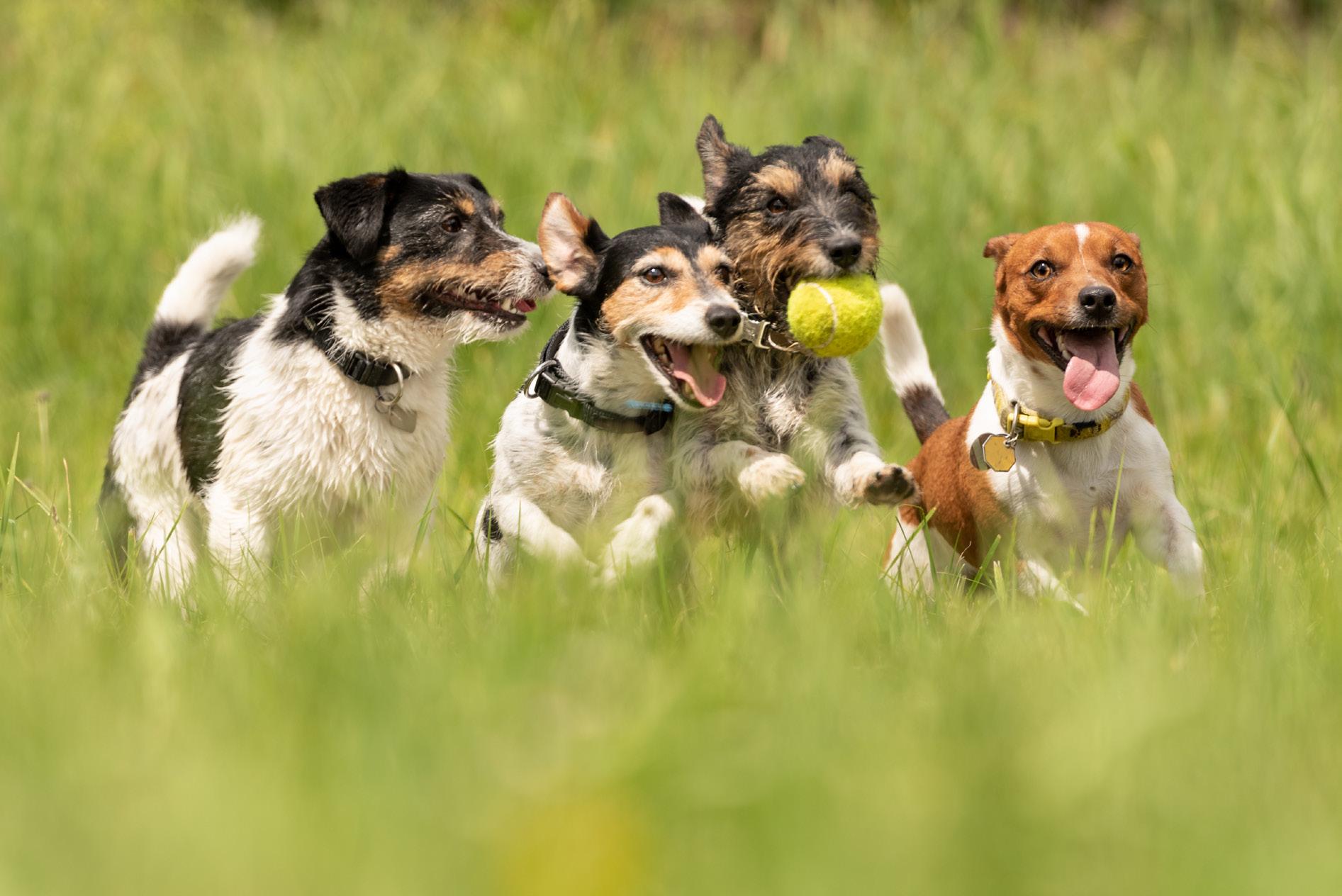
TAKE HOME MESSAGE
Socialising your dog is an ongoing process that requires patience, consistency, and positive reinforcement. By exposing your dog to various people, pets, and environments, you help them become a well-adjusted and confident companion. Remember to always create positive experiences and respect your dog’s comfort levels. With time and effort, you can ensure your dog is happy, secure, and well-socialised, ready to enjoy all the adventures life has to offer.
DQ | 8C 57 DOG TRAINING
Un s u ng heroes
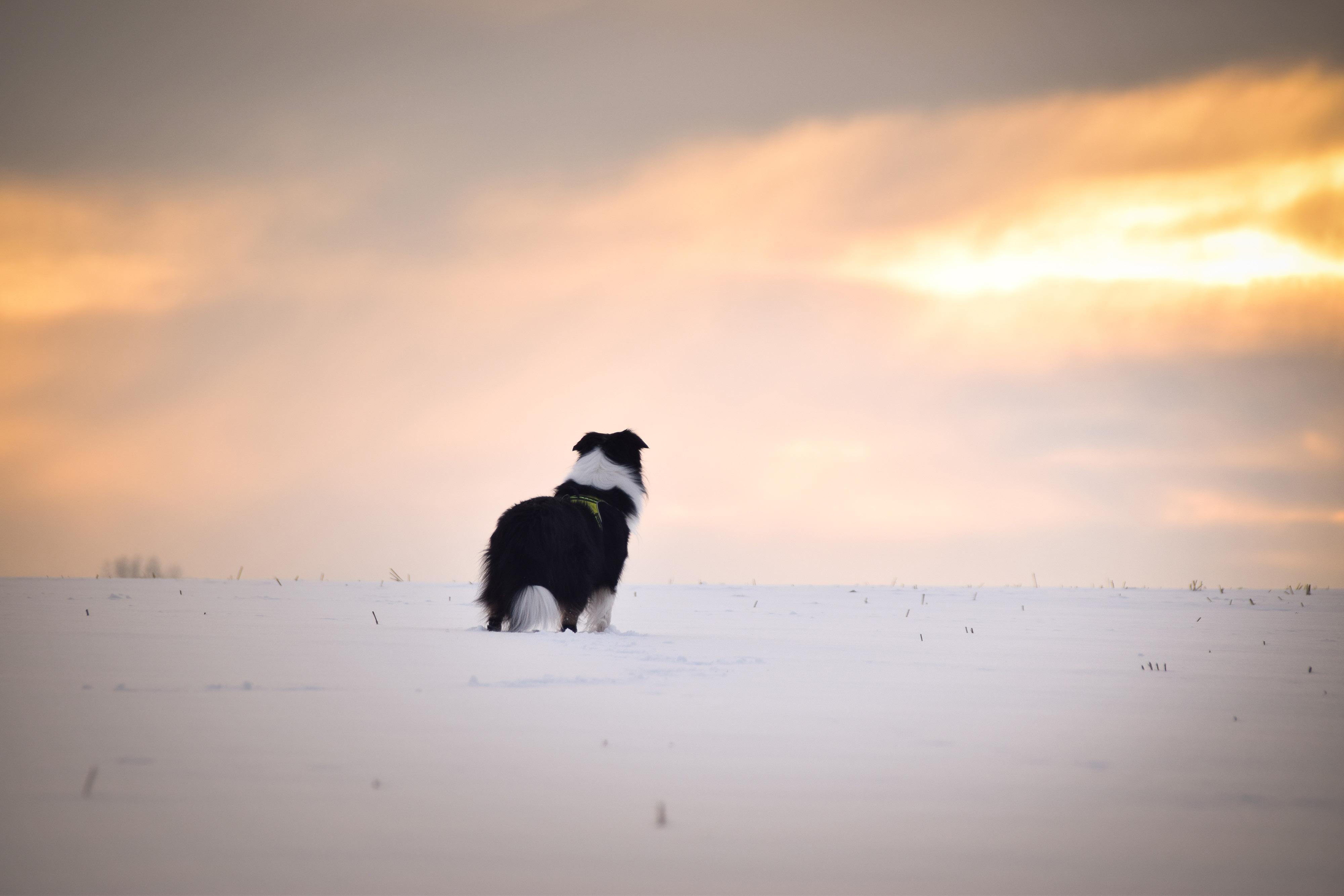
DQ | 8C 58 DOGS AT WORK
of the snow
AVAL A NCHE RESCUE
DOGS

In the treacherous, snow-covered landscapes where avalanches pose a constant threat to life, a uniquely trained group of canines stands ready to save lives. Avalanche Rescue Dogs, with their exceptional training and keen senses, are indispensable assets in search and rescue missions. These heroic dogs, often seen bounding through snowdrifts with a sense of purpose, are trained to locate buried victims quickly, often making the difference between life and death.
DQ | 8C 59 DOGS AT WORK
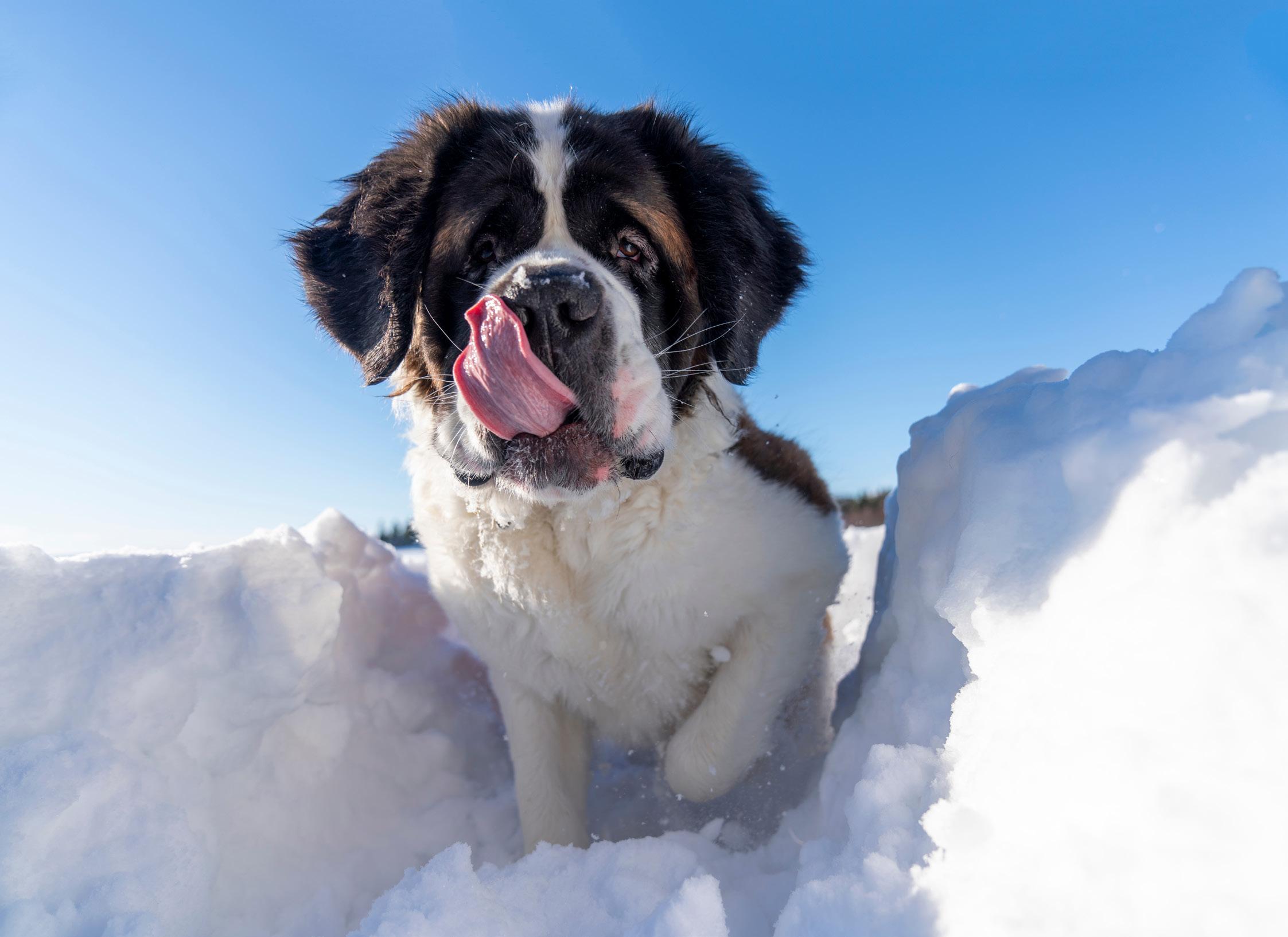
RESCUE DOGS
The use of dogs in avalanche rescue dates back to the 1930s in Switzerland, where St. Bernards were initially trained to locate people buried in snow. Over time, various breeds have been utilised for their unique skills and traits, including German Shepherds, Border Collies, and Labrador Retrievers. These breeds are favoured for their intelligence, stamina, and strong work ethic.
DQ | 8C 60 DOGS AT WORK
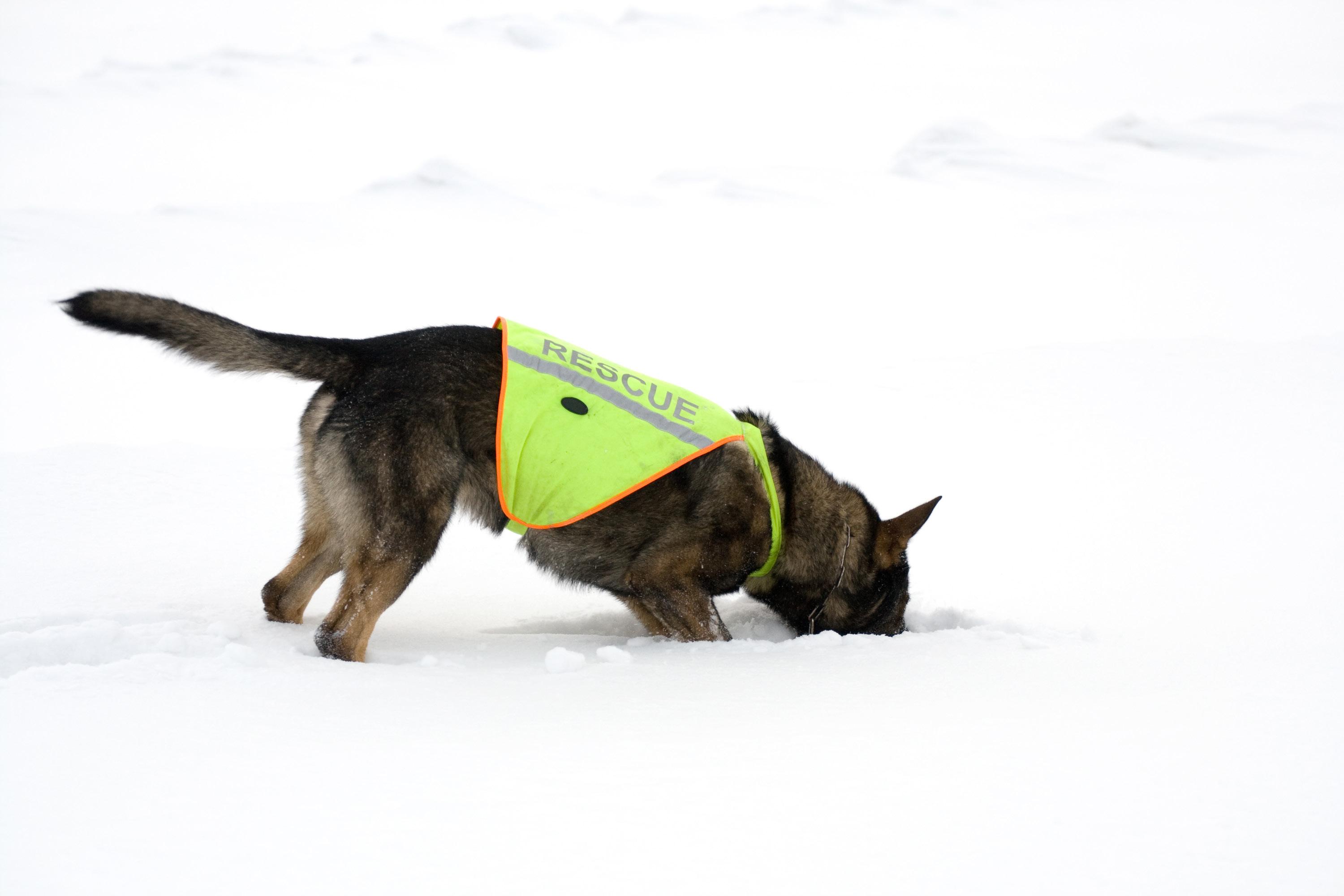
TRAINING PROCESS
Training an avalanche rescue dog is a rigorous process that begins when the dog is still a puppy and can take up to two years to complete. The stages of training are as follows:
1. Basic obedience and socialisation: Puppies learn basic commands and socialisation skills, essential for any working dog.
2. Scent detection training: Dogs are trained to recognise the scent of humans and to distinguish it from other
scents. This training often involves hiding people in snow caves or under debris to simulate real avalanche conditions.
3. Avalanche search training: Dogs practice locating buried individuals in various snow conditions, learning to signal to their handlers upon finding a scent.
4. Endurance and agility training: Given the harsh environments in which they work, these dogs undergo extensive physical conditioning to build stamina and agility.
DQ | 8C 61 DOGS AT WORK
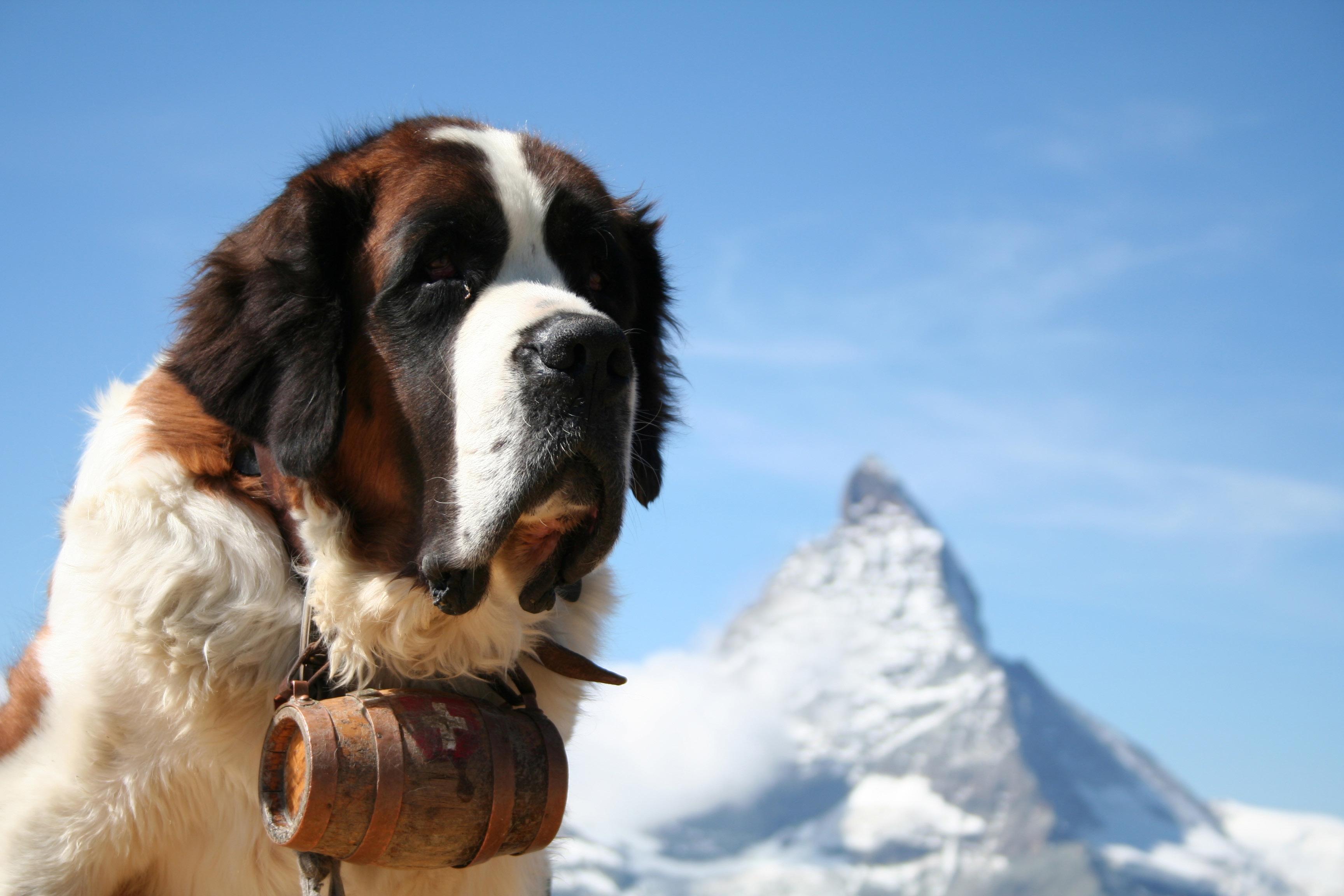
THE ROLE OF THE HANDLER
The bond between the dog and its handler is crucial. Handlers are typically experienced mountain rescuers who work closely with their dogs, understanding their cues and signals. This partnership is built on trust and intensive training, ensuring the team operates effectively in highstress situations.
DQ | 8C 62 DOGS AT WORK

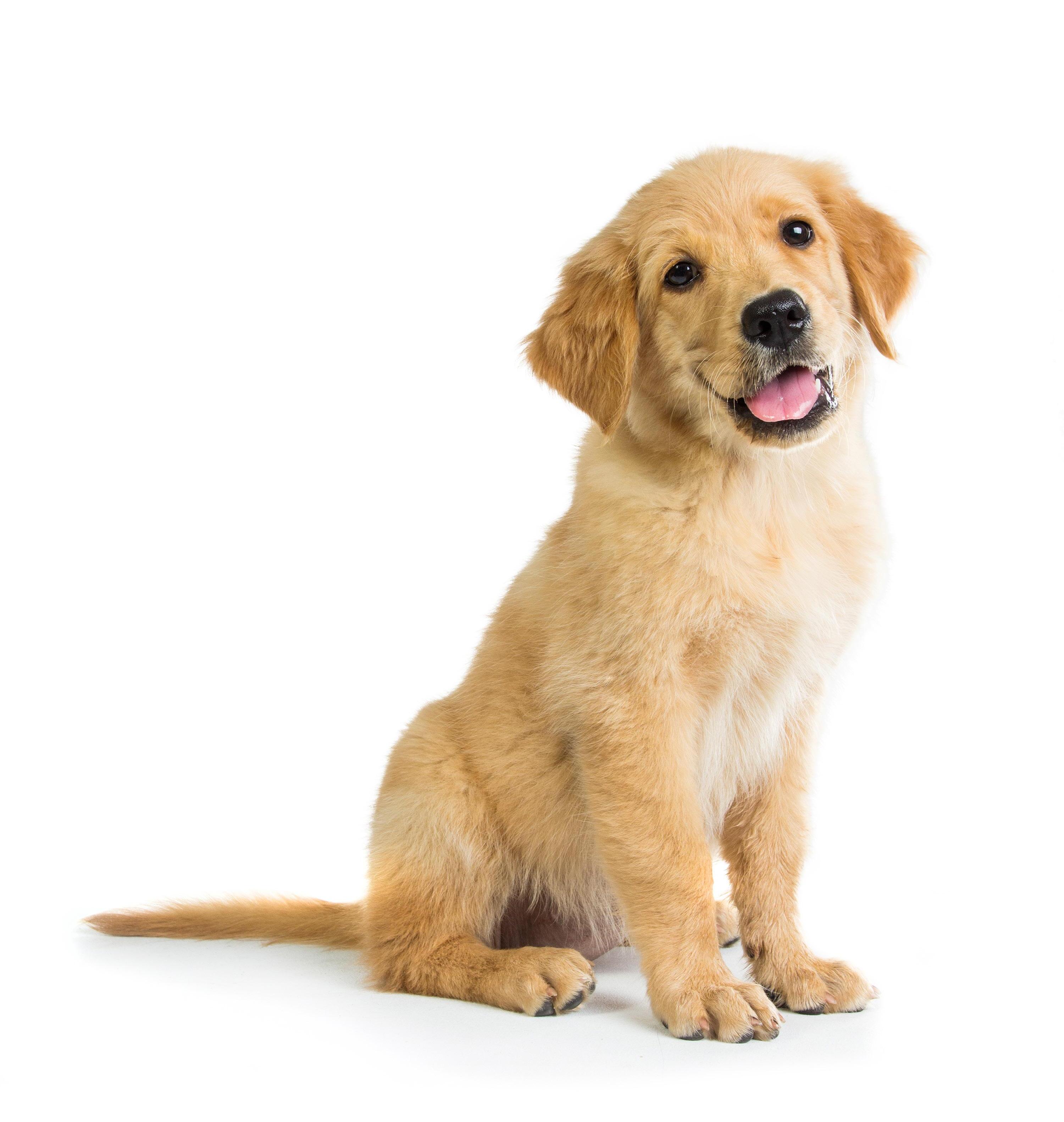
BREEDS COMMONLY USED
While many breeds can be trained for avalanche rescue, some of the most commonly used include:
- German Shepherds: Known for their intelligence, strength, and versatility, they are perfect for the role.
- Border Collies: Highly energetic and quick learners, they are ideal for searches.
- Labrador Retrievers: Friendly, eager to please, and with a keen sense of smell these dogs are great at finding lost humans.
DQ | 8C 63 DOGS AT WORK
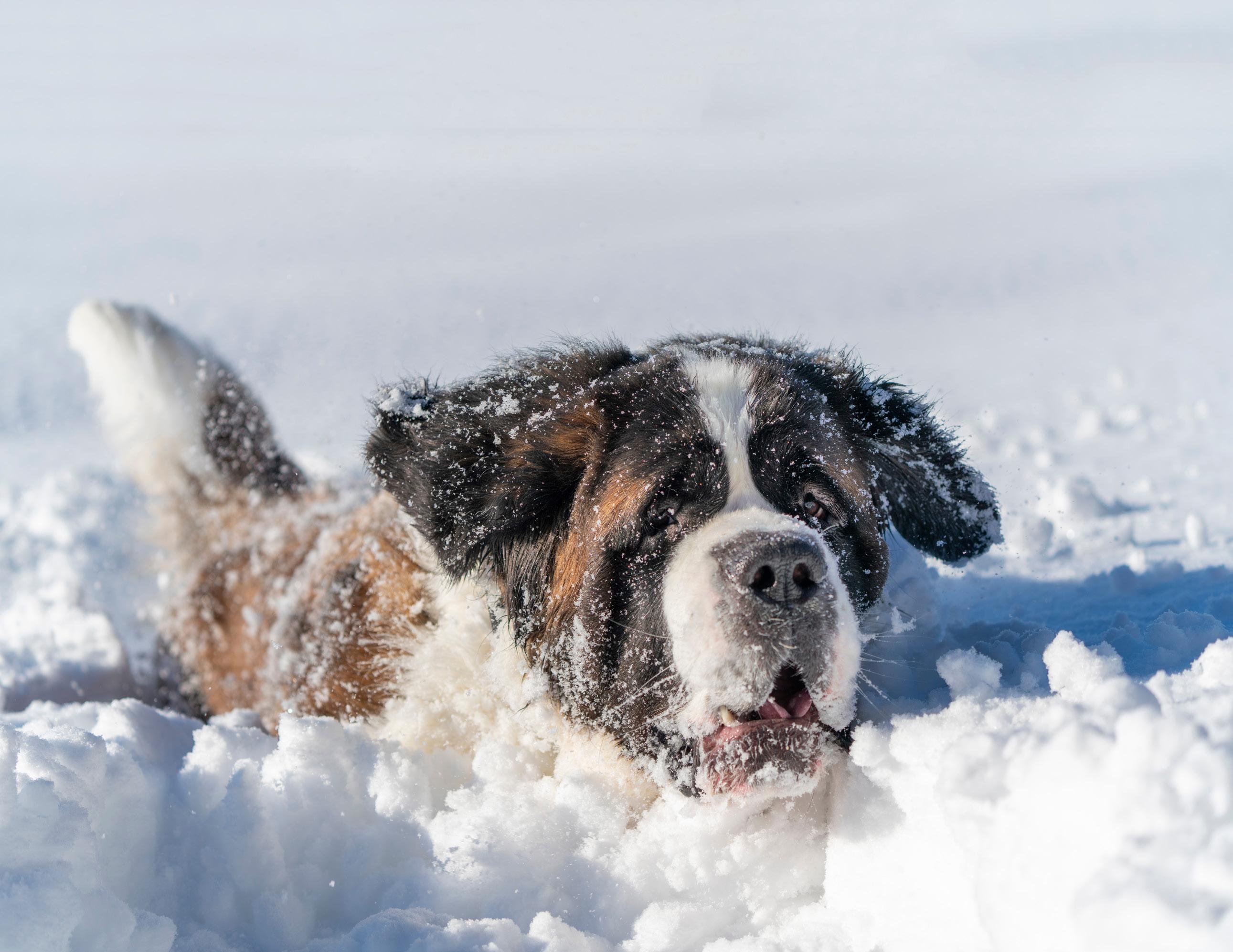
REAL-LIFE HEROES
There are countless stories of avalanche rescue dogs saving lives. For instance, in the Swiss Alps, a Labrador named Barry became a legend after saving dozens of lives during his career. Modern-day rescue dogs continue this legacy, providing hope and safety in avalanche-prone regions worldwide.
THE SCIENCE BEHIND THEIR SUCCESS
A dog's sense of smell is up to 100,000 times more sensitive than a human's. This incredible olfactory ability allows them to detect human scent even through metres of snow. When an avalanche occurs, time is critical; the survival rate drops significantly after the first 15 minutes. Rescue dogs can cover large areas quickly, increasing the chances of locating victims in time.
DQ | 8C 64 DOGS AT WORK
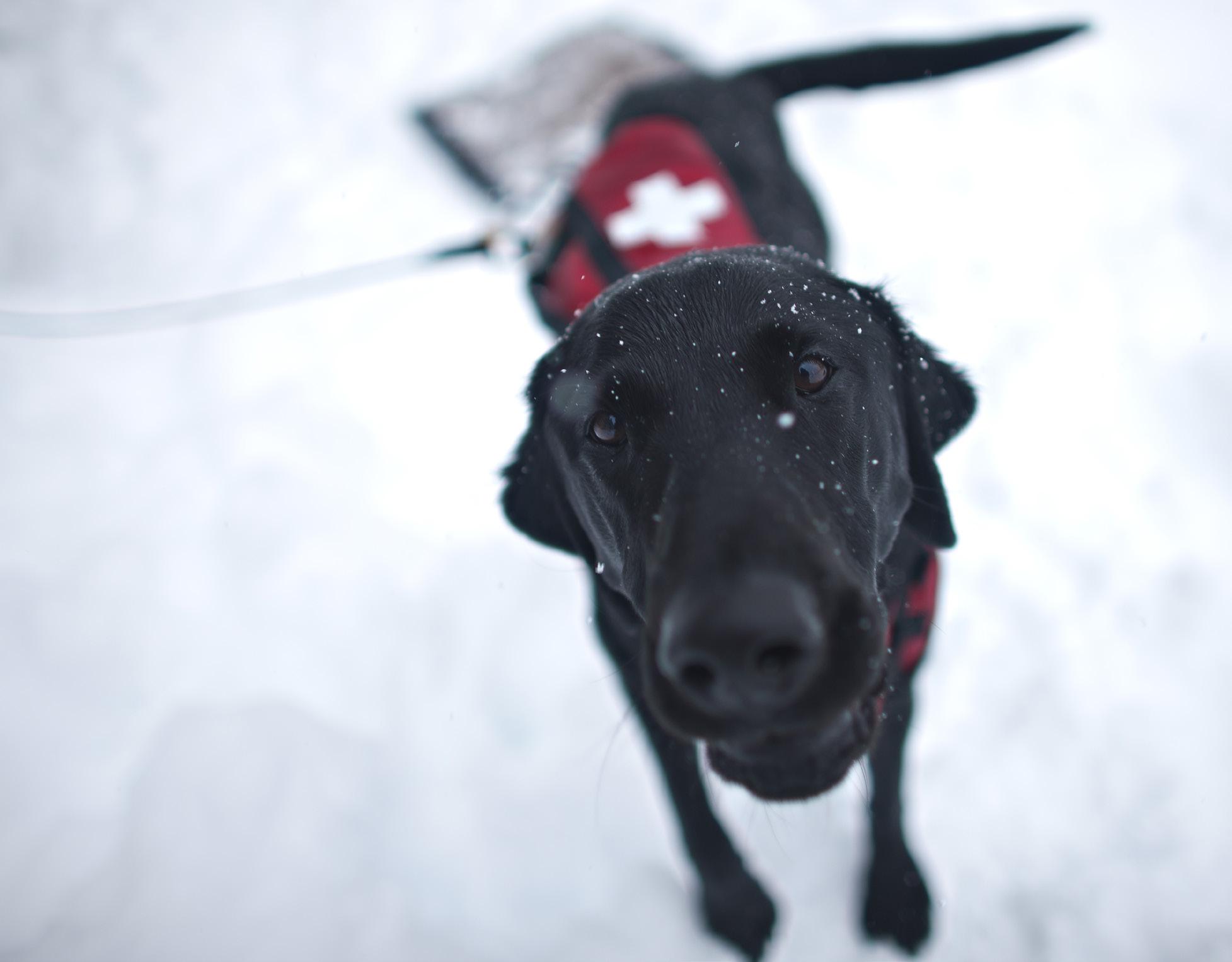
CHALLENGES AND RISKS
Avalanche rescue missions are fraught with dangers, not just for the victims but also for the rescue teams. Dogs and handlers face extreme weather conditions, unstable snowpacks, and physical exhaustion. Despite these challenges, their training and resilience enable them to perform their duties with remarkable efficiency.
FINAL THOUGHTS
Avalanche rescue dogs are truly unsung heroes, braving the elements to save lives. Their specialised training, combined with their natural abilities, makes them indispensable in search and rescue operations. As they bound through snow-covered mountains with determination, these dogs remind us of the incredible bond between humans and their canine companions, a bond that saves lives in the snow.
DQ | 8C 65 DOGS AT WORK
YOUR DOG QUESTIONS ANSWERED
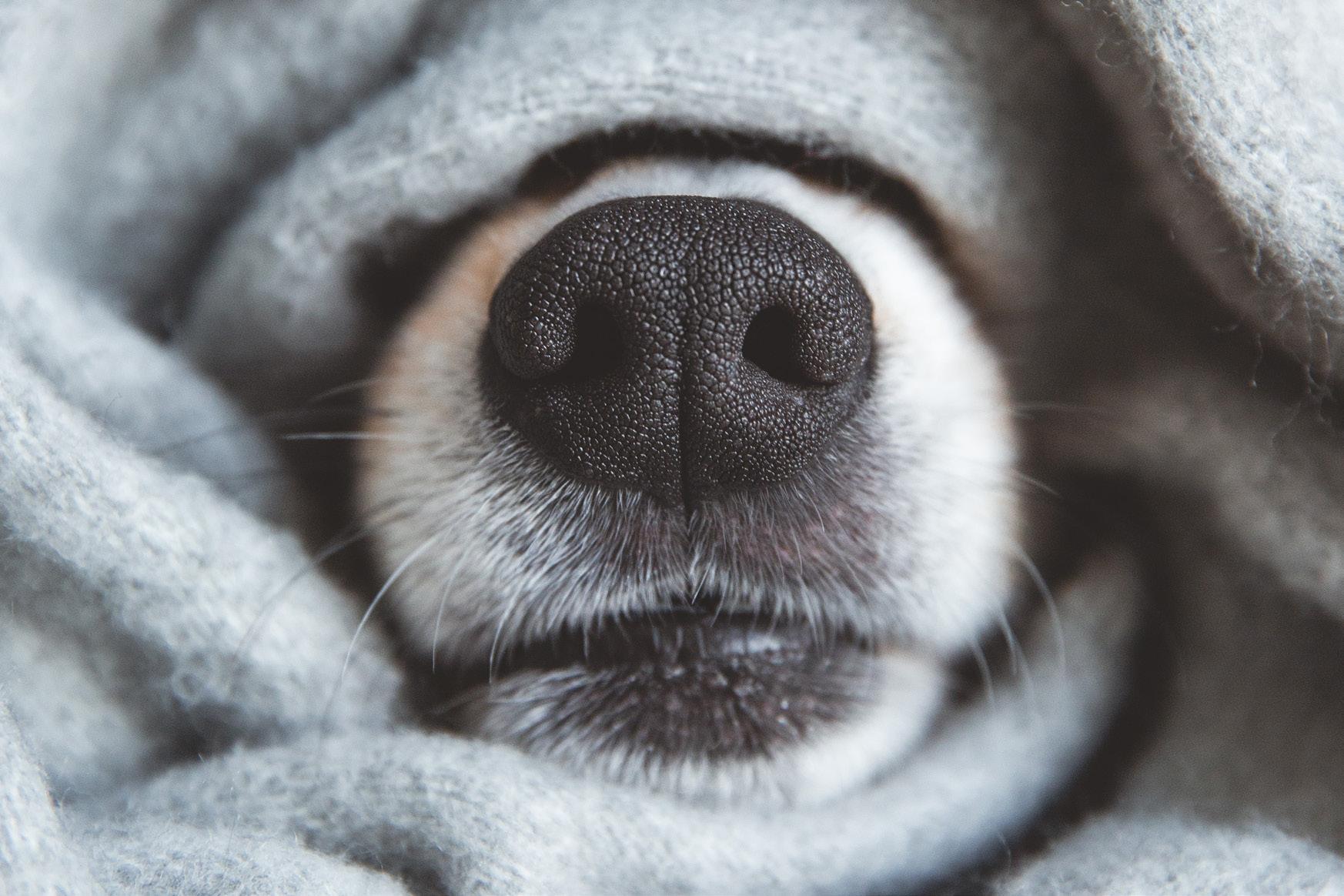
Do dogs feel the cold as much as humans?
Dogs feel the cold, but their tolerance and response to cold weather can differ significantly from humans and vary widely among individual dogs. Several factors influence how dogs experience cold weather, including breed, size, coat type, age, and overall health.
FACTORS AFFECTING COLD TOLERANCE
1. Breed and coat type
• Thick-coated breeds: Dogs like Siberian
Huskies, Alaskan Malamutes, and Saint Bernards have thick, double-layered coats designed for cold climates. They tend to tolerate cold weather better than breeds with thin coats.
• Short-coated breeds: Dogs with short or thin coats, such as Greyhounds, Chihuahuas, and Doberman Pinschers, are more sensitive to cold and may require extra protection.
2. Size and body fat
• Smaller dogs: Small dogs and those with less body fat, like Italian Greyhounds and Dachshunds, can lose body heat quickly and may feel the cold more intensely.
DQ | 8C 66 ?
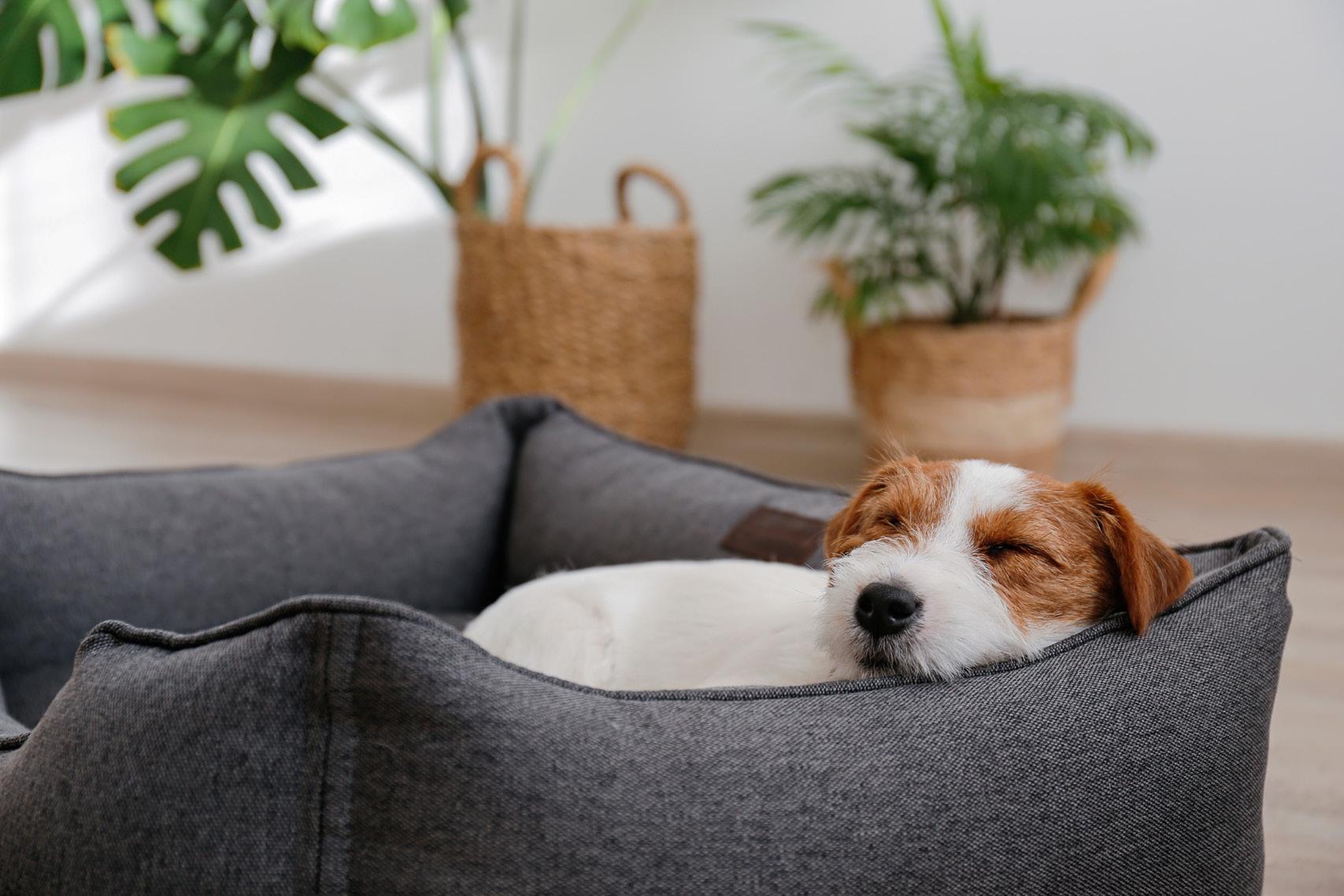
• Larger dogs: Larger dogs with more body fat retain heat better and may be more comfortable in cooler temperatures.
3. Age and health
• Puppies and elderly dogs: Younger and older dogs are more vulnerable to cold due to their developing or weakened immune systems and lower body fat.
• Health conditions: Dogs with certain health conditions, such as arthritis, heart disease, or hypothyroidism, may feel the cold more and require extra care.
SIGNS YOUR DOG IS COLD
• Shivering or shaking
• Whining or barking
• Seeking warm places or trying to burrow
• Lifting paws off the ground
• Curling up tightly
• Reluctance to go outside
KEEPING YOUR DOG WARM
• Clothing: Consider dog sweaters or jackets, especially for short-coated or small dogs.
• Shelter: Ensure your dog has a warm, dry place to sleep during cold weather.
• Bedding: Use warm, padded bedding and consider heated pet beds or mats for extra warmth.
• Exercise: Keep your dog active to help generate body heat, but limit exposure during extreme cold and be mindful of icy conditions that can cause injury.
• Booties: Protect your dog's paws with booties to prevent frostbite and protect them from ice, snow, and salt.
CONCLUSION
Dogs do feel the cold, but their tolerance varies based on breed, size, coat type, age, and health. By recognising the signs that your dog is cold and taking steps to keep them warm and comfortable, you can ensure they stay safe and healthy during cold weather. Consider your dog’s needs and consult your veterinarian for specific advice tailored to your pet.
DQ | 8C 67 Q&A
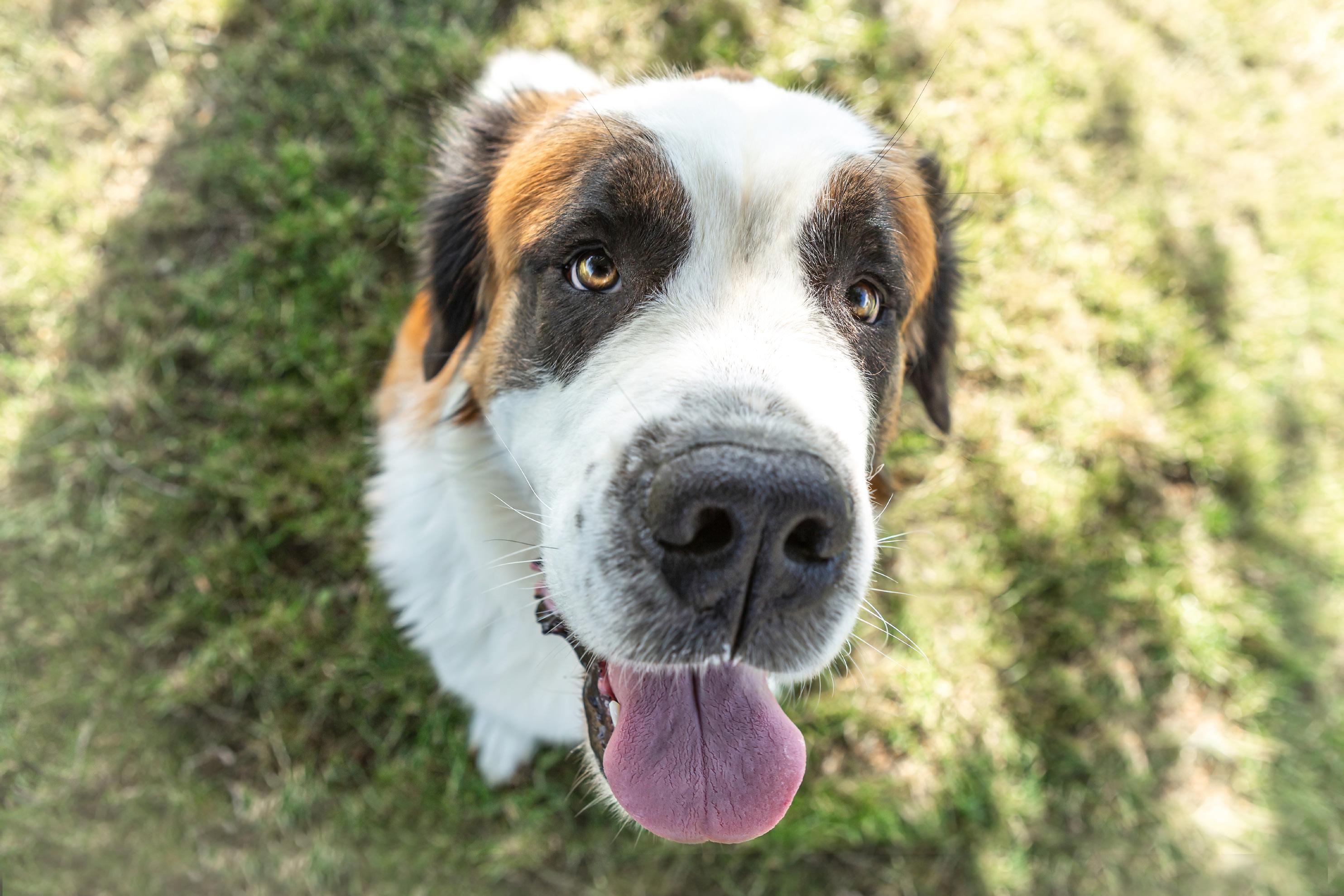
Is positive reinforcement suitable for dogs who are overweight?
Positive reinforcement is suitable for all dogs, including overweight ones. In fact, it is one of the most effective and
humane training methods available. The key to using positive reinforcement with overweight dogs is to be mindful of the types and amounts of rewards used. Here are some tips on how to effectively use positive reinforcement while managing your dog's weight:
DQ | 8C 68 Q&A
1. Choose healthy treats
• Low-calorie options: Use low-calorie treats specifically designed for training. Many commercial dog treats come in low-calorie versions.
• Small portions: Cut treats into small pieces to limit calorie intake while still providing a reward.
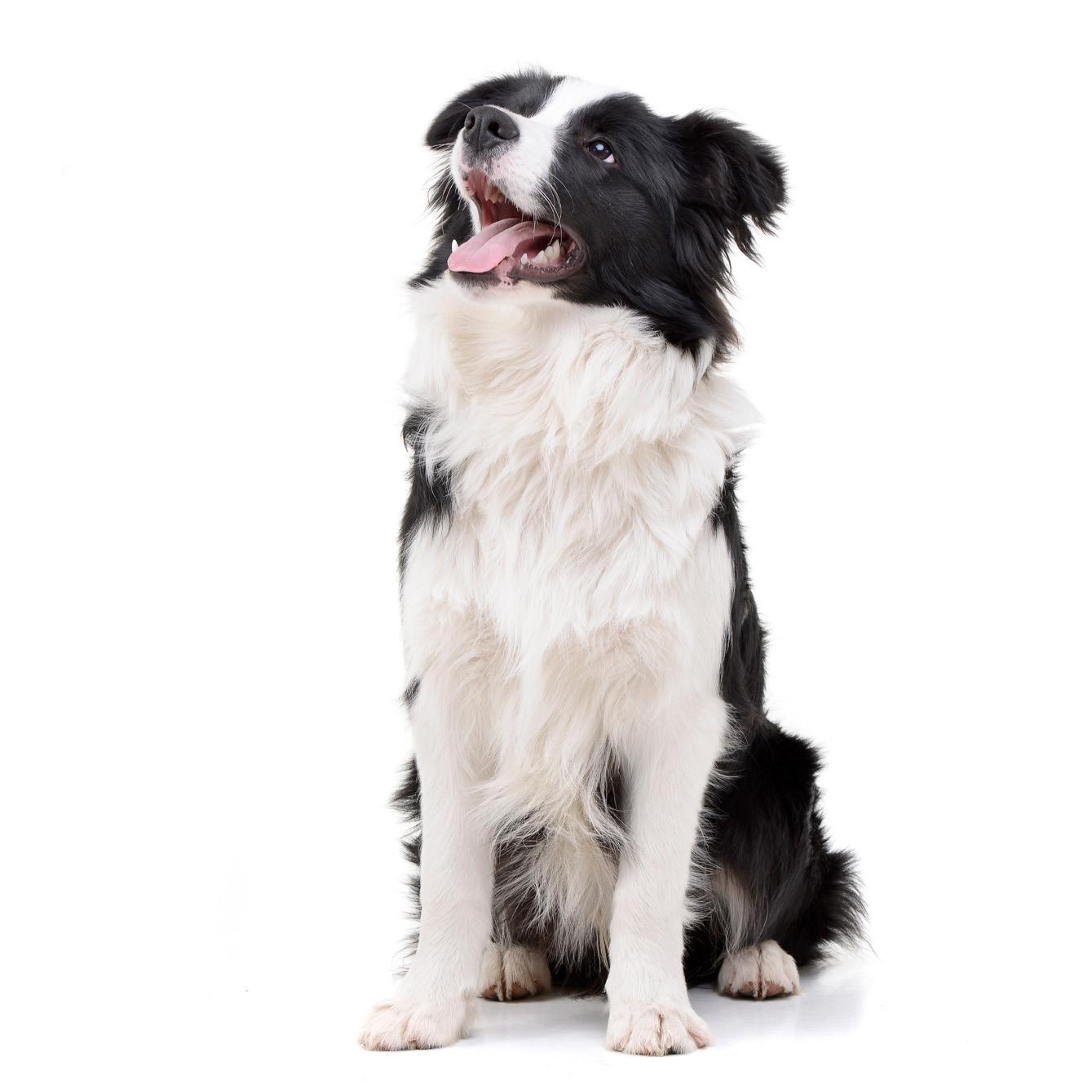
• Vegetables: Many dogs enjoy vegetables like carrots, green beans, or small pieces of apple, which are low in calories and healthy.
2. Use non-food rewards
• Praise and affection: Verbal praise, petting, and playtime can be very effective rewards and help reinforce good behaviour without adding calories.
• Toys and play: Use favourite toys or play sessions as rewards. Many dogs find playing fetch or tug-of-war just as rewarding as treats.
3. Monitor and adjust
• Calorie counting: Keep track of the treats and adjust your dog's regular meals accordingly to avoid overfeeding. Alternatively, you can use part of your dog’s meal as training treats. This way, you are not adding extra calories but still rewarding good behaviour.
• Measure progress: Regularly monitor your dog's weight and overall health. If you notice any negative changes, consult your veterinarian.
4. Exercise and activity
• Encourage movement: Incorporate physical activity into your training sessions. Even simple commands like ‘sit,’ ‘stay,’ and ‘come’ can be practised while on a walk or during playtime.
CONCLUSION
Positive reinforcement is highly effective and suitable for overweight dogs. You can successfully train your dog while managing their weight by choosing healthy treats, using non-food rewards, monitoring your dog's diet, and incorporating exercise. Always consult your veterinarian to create a balanced plan that suits your dog's needs.
DQ | 8C 69
Q&A
Products we love
Shopping fun
PaleoPet Pure 100% Green Beef Tripe for Dogs
Humans may find tripe to be somewhat of an acquired taste (and smell), but dogs absolutely love it! Our tripe has been thoroughly washed and cleaned for you, while retaining all the nutrition of unbleached tripe. It’s easy to serve and store and has so many health benefits for adult and senior dogs especially.
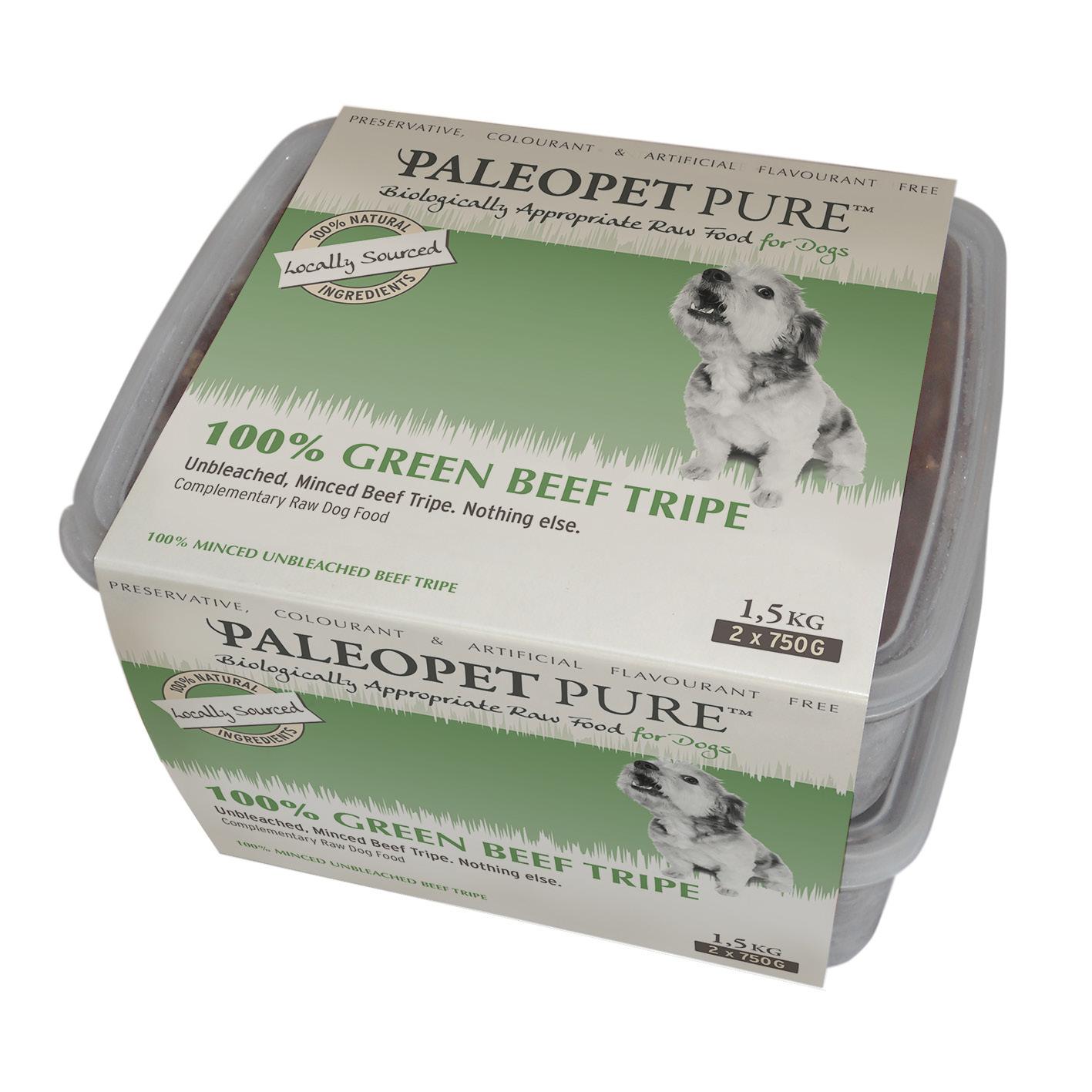
to no carbohydrate, moderate protein and high fat. Tripe can also entice dogs who may not feel all that well and are reticent to eat.
Our 100% Green Beef Tripe (and nothing else) is made from the best quality local beef with no preservatives, colourants or artificial flavourants.
Tripe is rich in trace minerals, while moderate in protein and fat. It is a great complementary raw food addition to a diet for dogs who may struggle with constipation or need foods that are easier to digest. Tripe doesn’t contain any bone, but still maintains a perfect calcium phosphorus balance, which is rare for animal protein without bone content.
Tripe can be used as a basis for a ketogenic diet for dogs with cancer or epilepsy where one should feed low
The PaleoPet Pure range is FSA Food Safety certified and DALRRD registered. Also available in convenient, pre-frozen 1,5 Kg and 750g tubs or as a box of 12 individually wrapped 100g Patties. The tubs are reusable, recyclable and PBA-free.
Products can be purchased online at www.paleopetpure.com and delivered to your door or bought at selected retailers.
DQ | 8C 70
follow us on Instagram @dogquarterlymag and Facebook dqmagazine
stay tuned for the next issue of
DQ | 8C 72 WWW.DQMAGAZINE.CO.ZA Next magazine issue of available 15 July 2024



